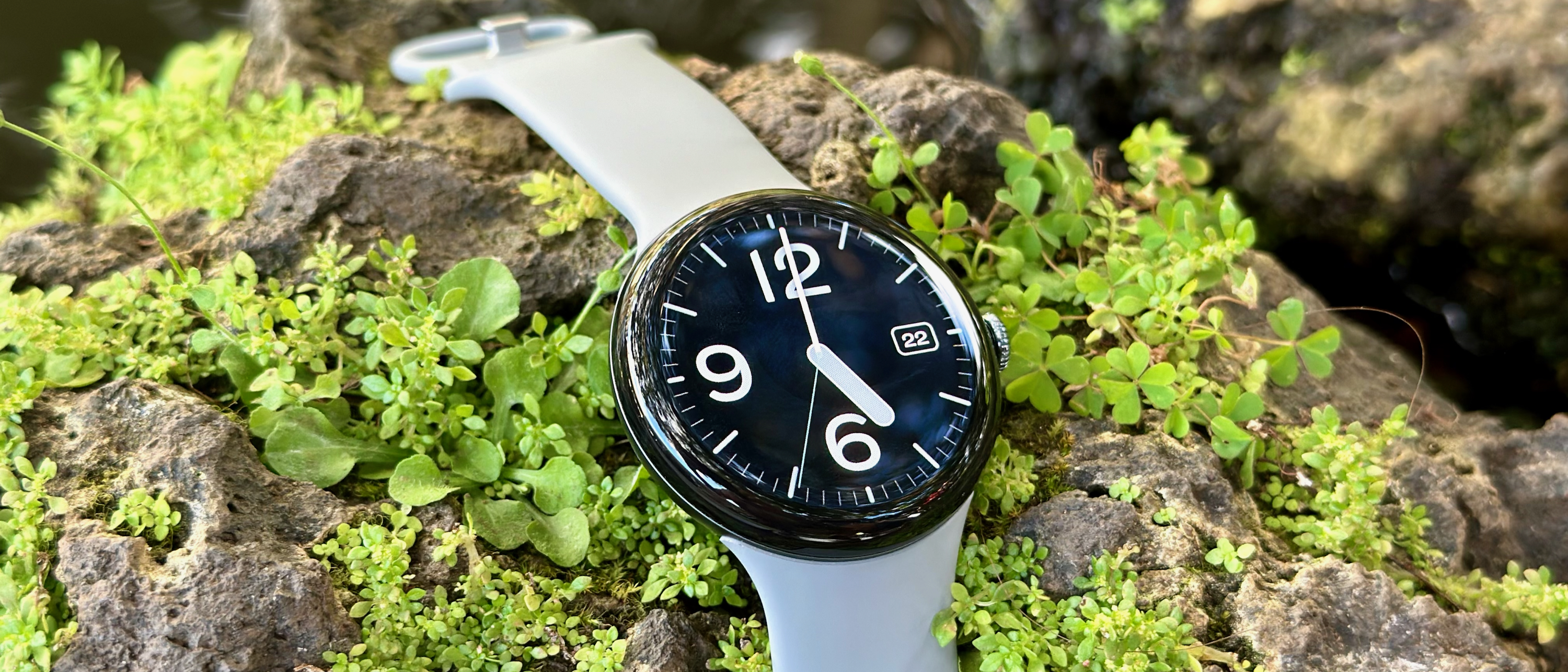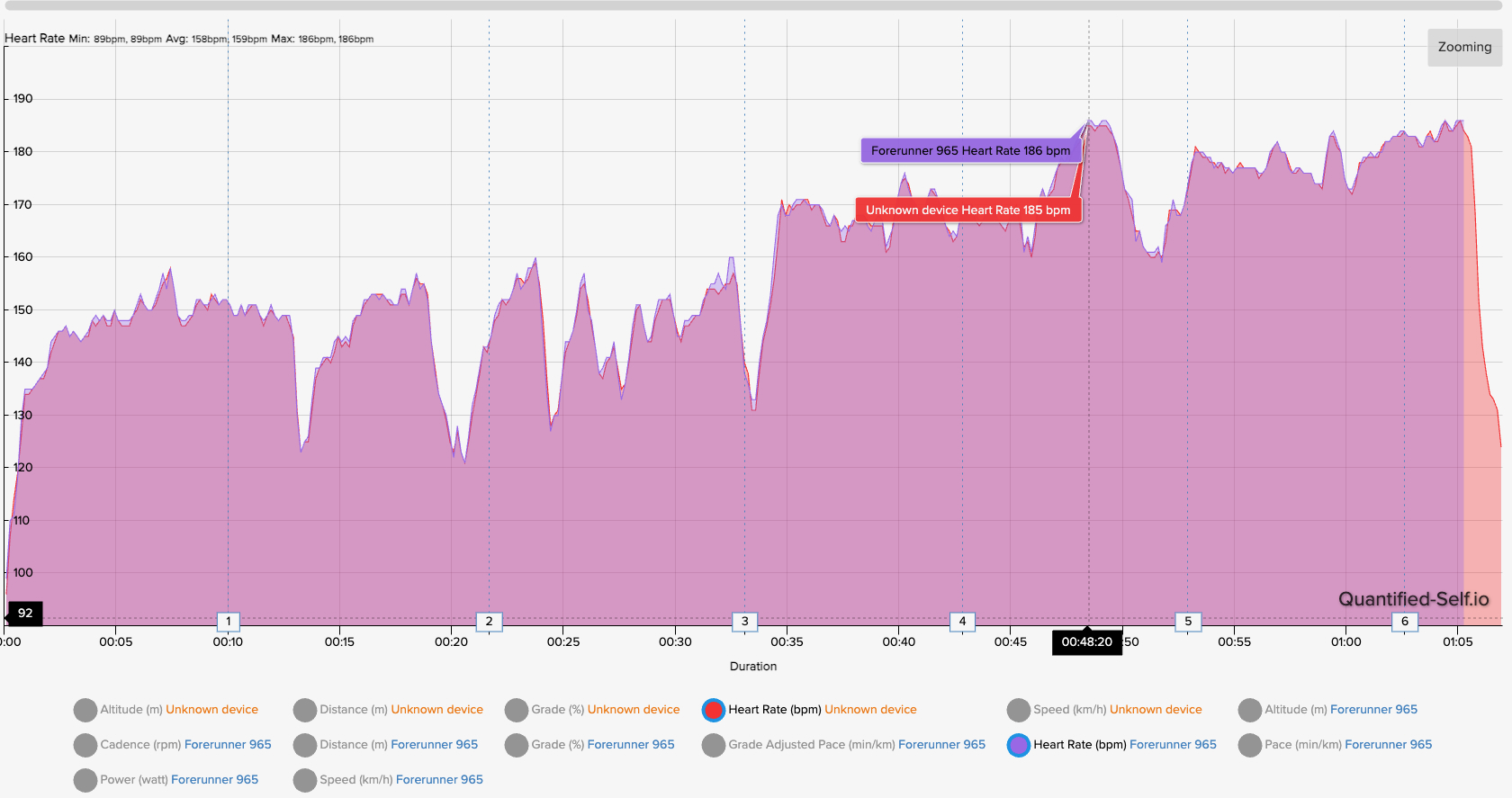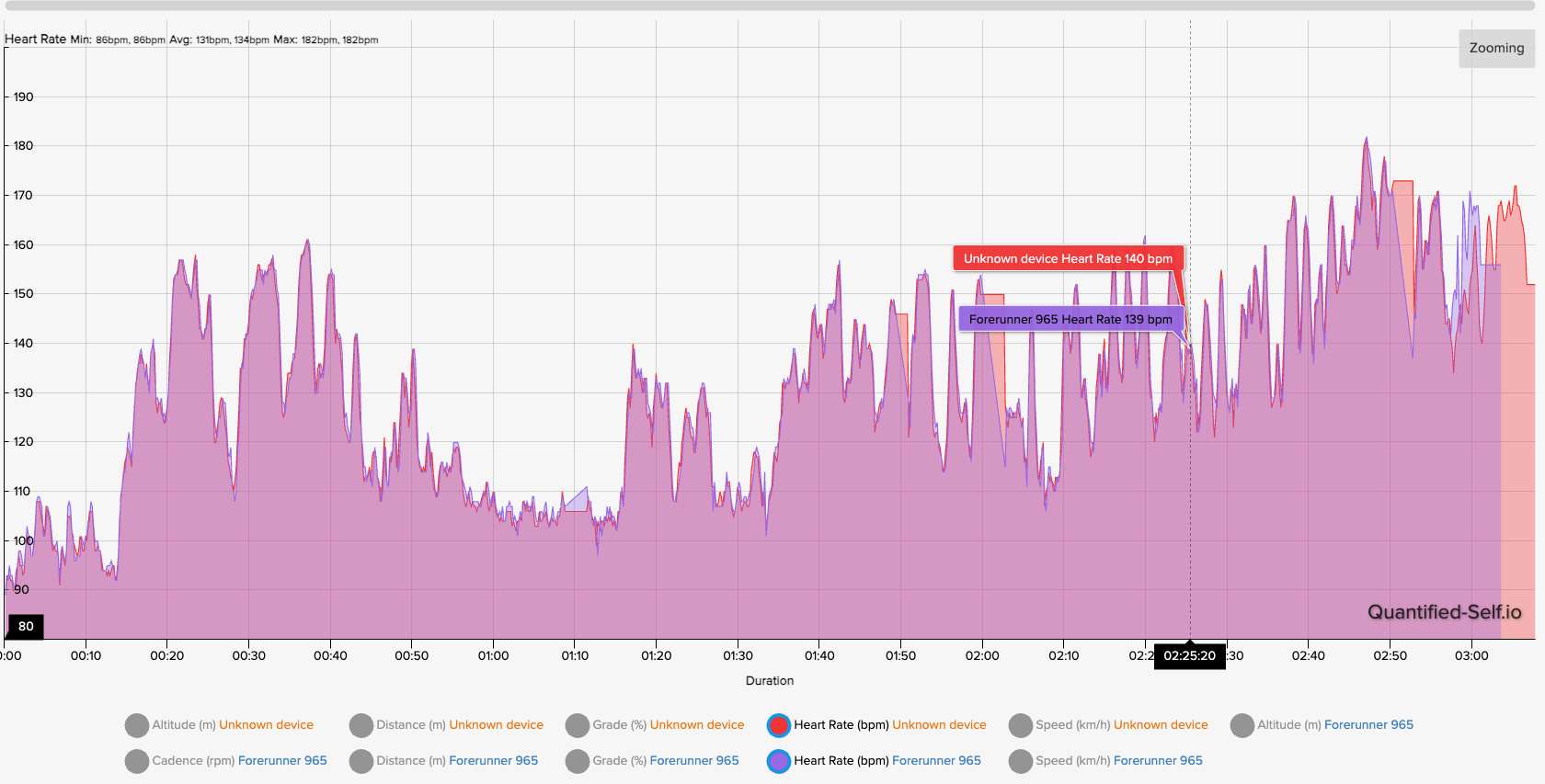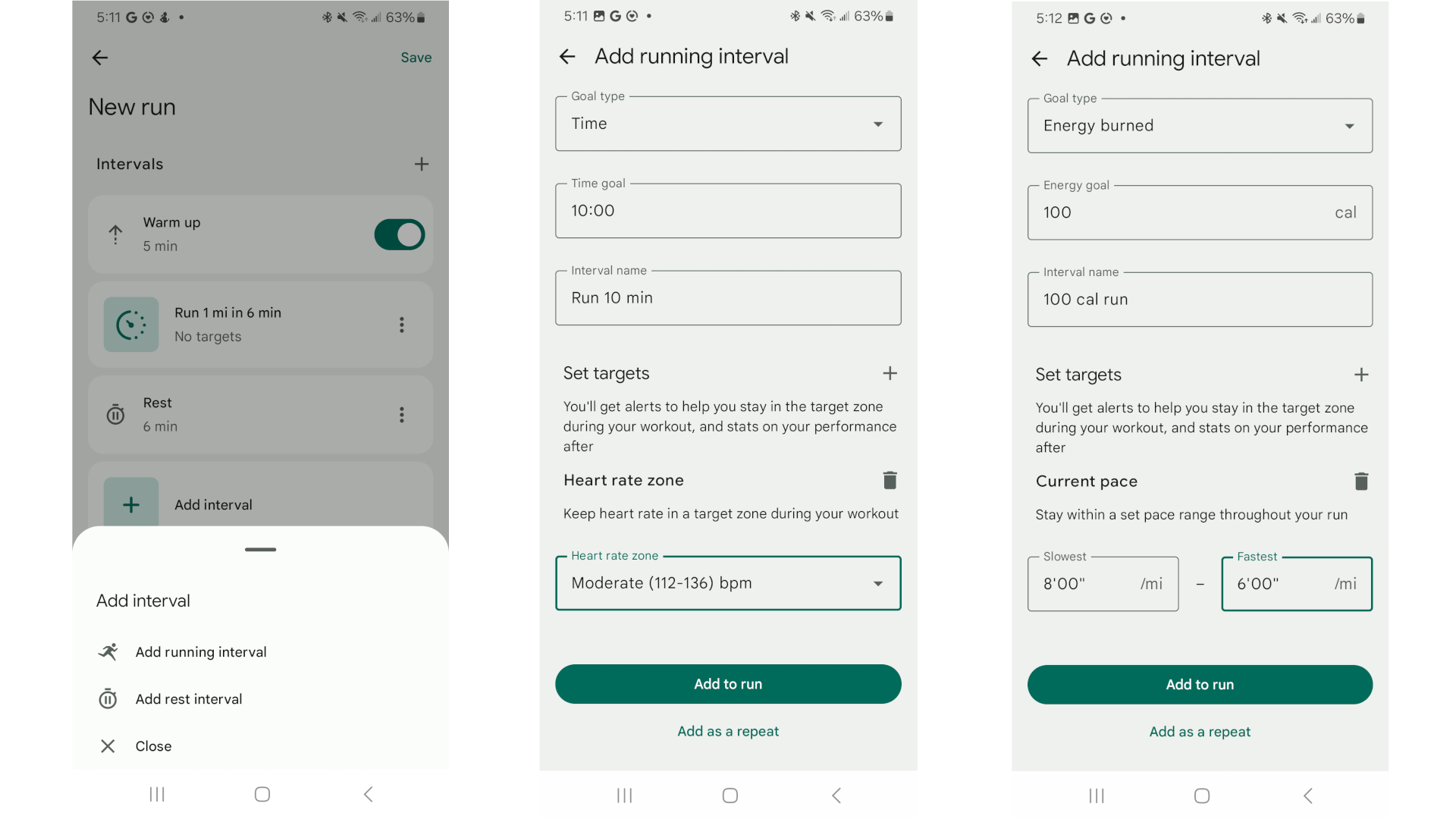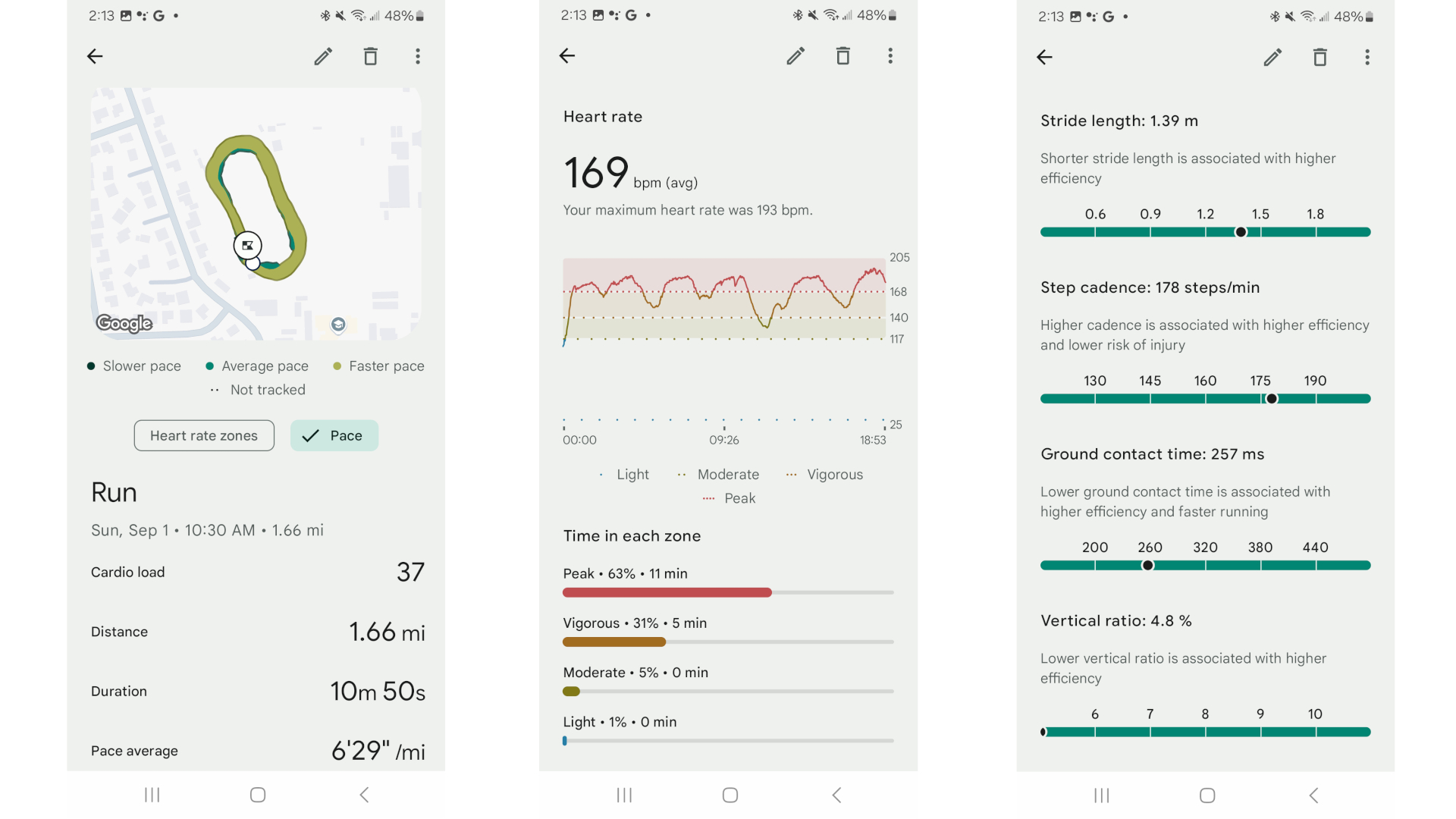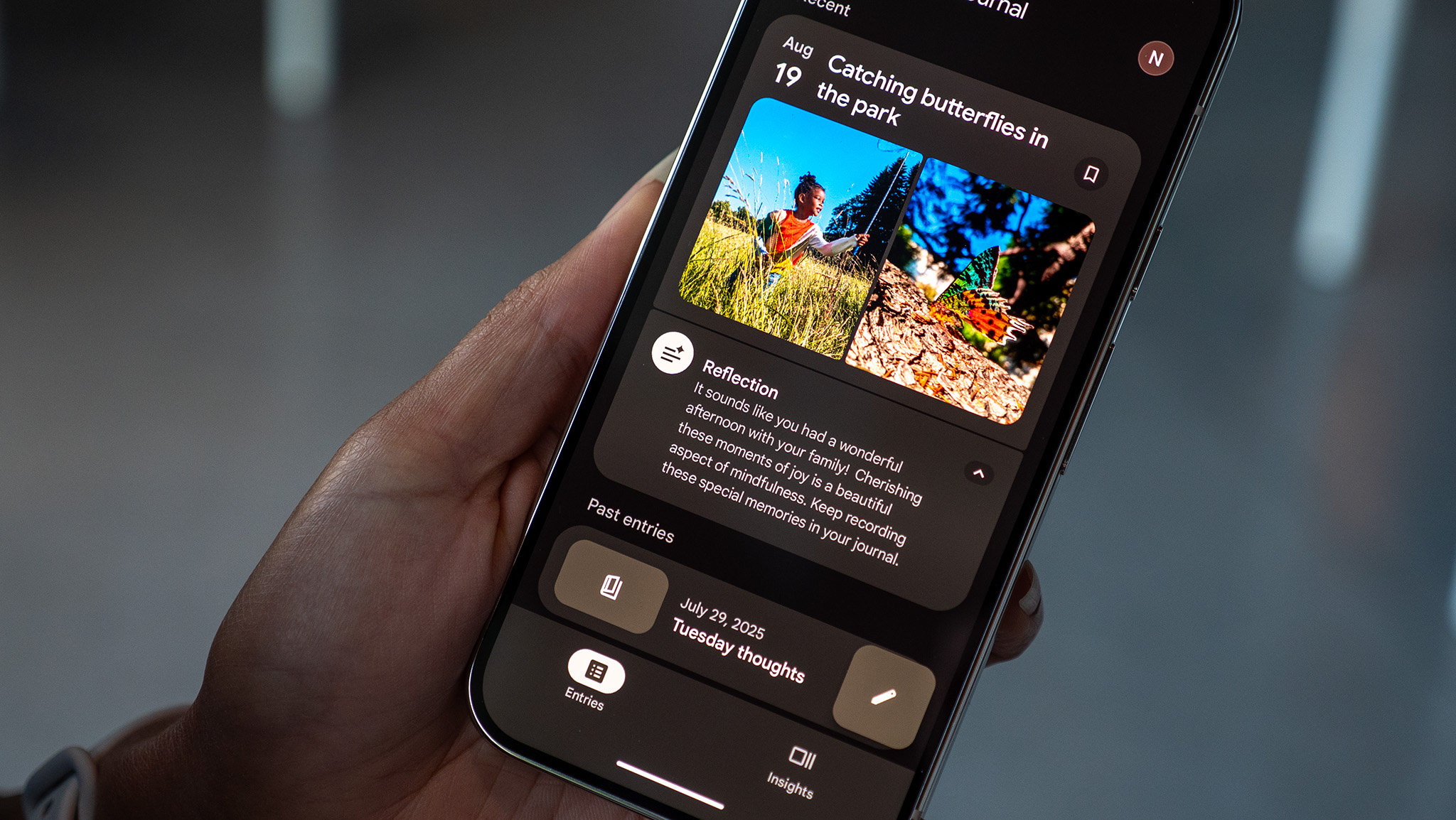Android Central Verdict
The Google Pixel Watch 3 kept the same hardware and design as the Watch 2 but fixed its notoriously small, dim, and thick-bordered display. Pixel phone owners will love its close integration with Google apps, and the Wear OS software keeps improving with new updates. Some will love the soft-edged look, while others will resent its lack of ruggedness. Ultimately, it's a real rival to the Galaxy Watch 7 and an Android Central staff favorite.
Pros
- +
Brighter, smoother, and larger display than before
- +
Lasts far longer than Google's 24-hour estimate
- +
Wear OS 5 makes PW3 more interconnected with Google/ Pixel tech
- +
Workout builder, Cardio Load, and Morning Brief will gratify athletes
- +
Still dependable for health and sleep tracking
Cons
- -
Not especially durable, with no sapphire glass
- -
GPS accuracy is wonky and non-running workout data is basic
- -
Other Wear OS watches last a day longer
- -
One fewer Wear OS update than Samsung
Why you can trust Android Central
Months after I first reviewed the Google Pixel Watch 3, it remains my go-to Android watch. Its enlarged, brighter display makes it much more wearable than the tiny, thick-bordered Pixel Watch 2 ever was. It's fun and stylish, comfortably fast, longer-lasting than Google's spec sheet implies, and packed with new running software that I appreciate. It's not perfect, but it's improved in the areas it needed to.
It does fall short against rival watches in key areas. Its battery falls well short of the OnePlus Watch 3. The Samsung Galaxy Watch 7 is more rugged and gets longer software support. And other fitness watch brands, like Garmin, don't charge a subscription for some of the insights that Fitbit Premium offers.
Still, the Pixel Watch 3 is one of the best Android watches available today.

Michael has tested several Fitbit and Pixel Watches while reviewing competing brands from Garmin and Apple to Samsung and OnePlus. He's Android Central's go-to runner for testing watches' accuracy and features against each other.
Google Pixel Watch 3: Price and availability
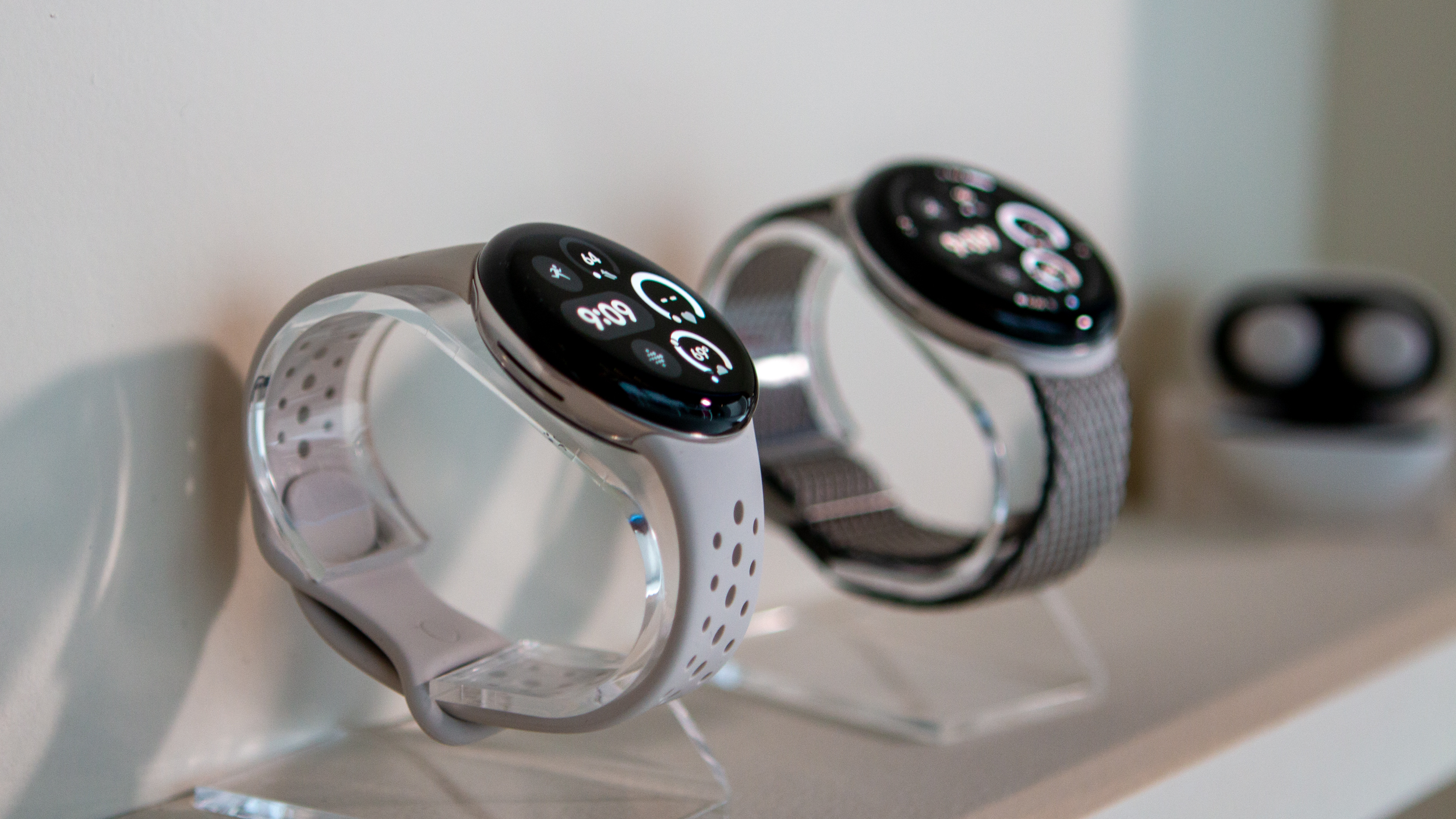
The Google Pixel Watch 3 launched on September 10, 2024. The Pixel Watch 3 41mm costs $349; the 45mm costs $399. You pay $100 more for LTE support. It's more expensive than the Galaxy Watch 7, but about on par with other brands like OnePlus and TicWatch.
Both sizes have three color options: Matte Black and Polished Silver for both, Champagne Gold in the smaller size, and Matte Hazel for the larger size.
Our Pixel Watch 3 buyer's guide goes into greater depth on carrier options, trade-in deals, and availability.
Google Pixel Watch 3: Specs
Specs | Google Pixel Watch 3 |
|---|---|
Colors | Matte Black, Polished Silver, Champagne Gold (41mm), Matte Hazel (45mm) |
Materials | Recycled aluminum |
Band | Active (fluoroelastomer) |
Dimensions | 41 x 41 x 12.3mm / 45 x 45 x 12.3mm |
Weight (w/out band) | 41mm: 31g; 45mm: 37g |
Weight with small/large Active band | 41mm: 55g/63g; 45mm: 61g/69g |
Protection | Corning Gorilla Glass 5, 5ATM, IP68 |
Display | 1.27-inch (408x408) or 1.43-inch (456x456) Actua AMOLED LTPO display |
| Row 8 - Cell 0 | 2,000 nits, 60Hz refresh rate |
Connectivity | Bluetooth 5.3, Wi-Fi 2.4/5GHz, NFC, UWB, LTE (upgrade), GPS, Galileo, Glonass, (ROW) Beidou, QZSS, Navic |
Sensors | Multi-path optical HR sensor, red & IR sensors for SpO2, multipurpose electrical (ECG), electrical skin conductance for body response (cEDA), skin temperature, accelerometer, altimeter, ambient light, barometer, compass, gyroscope, magnetometer |
Battery | 306mAh/ 420mAh, 24 hours with AOD, 36 hours with Battery Saver |
Charging | 41mm: 24 minutes to 50%, 35 minutes to 80%, 60 minutes to 100%; 45mm: 28 minutes to 50%, 50 minutes to 80%, 80 minutes to 100% |
CPU | Snapdragon W5 Gen 1 (1.7GHz), Cortex M33 co-processor |
Memory / Storage | 2GB + 32GB |
OS | Wear OS 5 (3 years of updates) |
Google Pixel Watch 3: Design, display, & bands
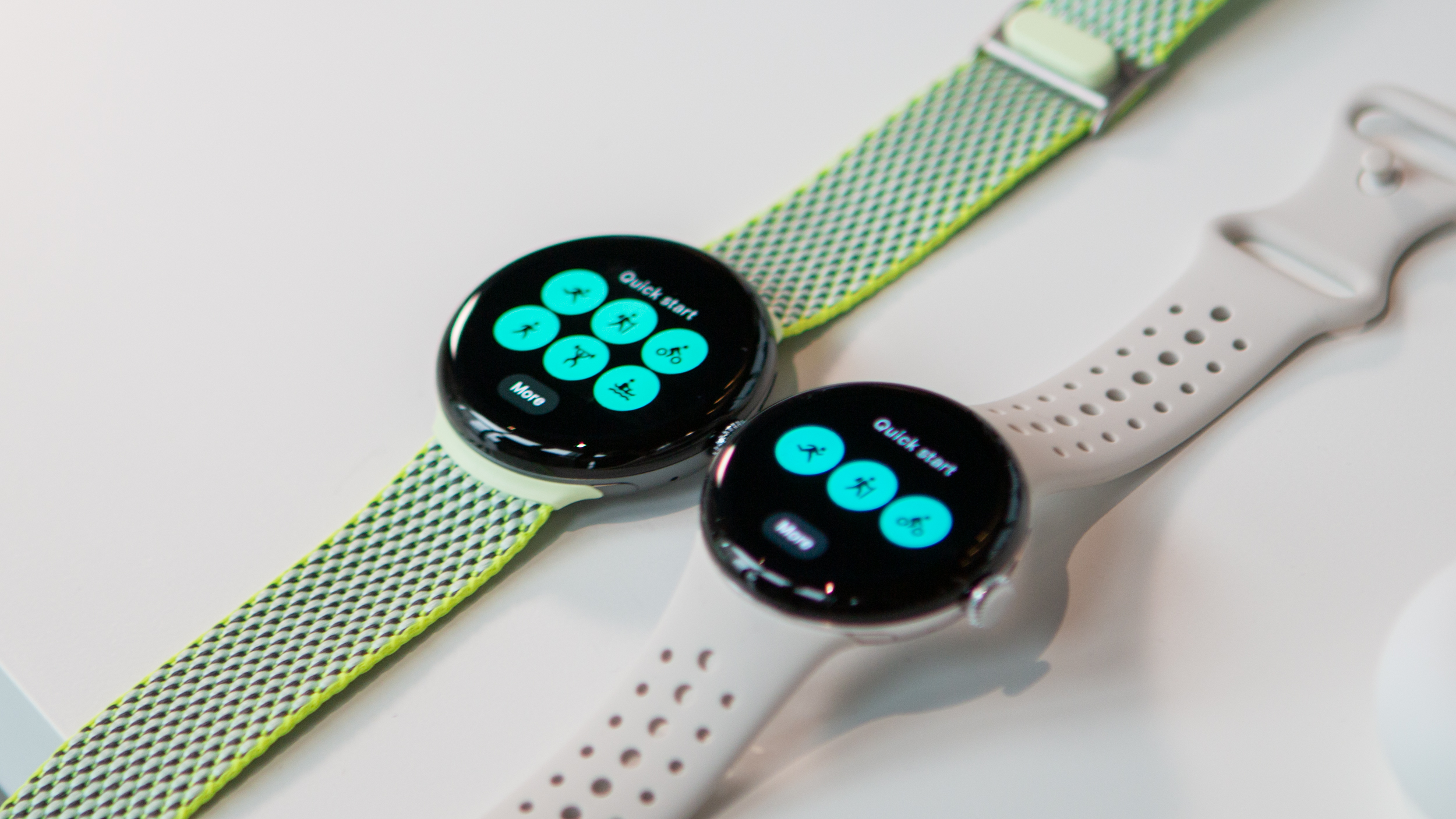
- The display jumps to 2,000 nits brightness, 60Hz refresh rate, and a new 1.43-inch size.
- The fluoroelastomer band is comfortable and sweat-wicking, if not that breathable
- The unique design turns heads but isn't very durable or classic
The default Watch 3 AMOLED measures 1.27 inches, while the 45mm upgrade gives you 1.43 inches and a resolution jump from 384x384 to 456x456. Wear OS 5 reflows and resizes content based on the screen size, so that extra space is used efficiently (as shown above).
Get the latest news from Android Central, your trusted companion in the world of Android
Most of the Android Central staff prefer the 45mm size, calling the smaller option "too dainty." However, if you're accustomed to the Watch 2 size, you'll appreciate how light the Watch 3 41mm feels, weighing as little as 55g with the small Active band.
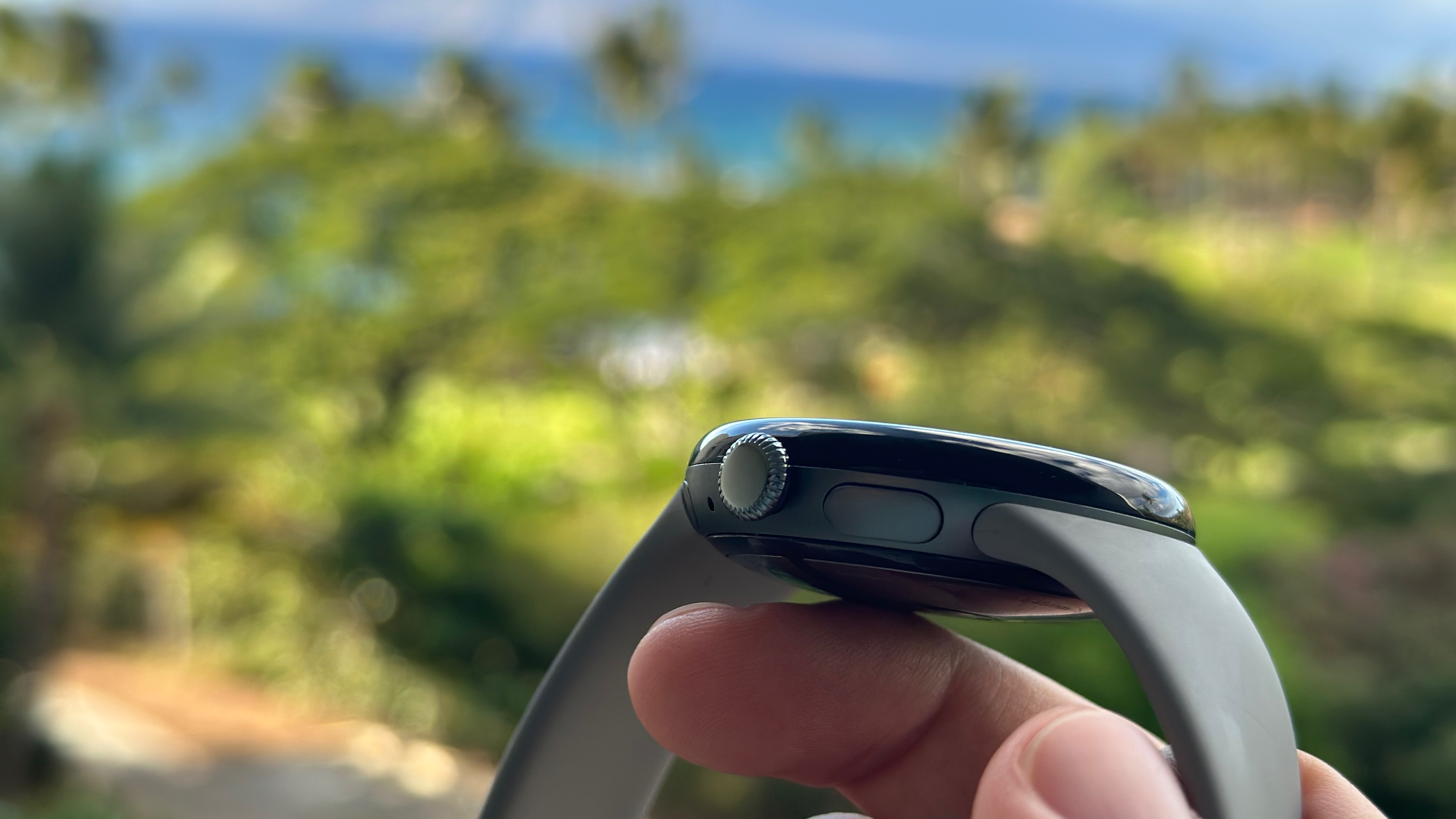
Comparatively, the 69g Watch 3 45mm with a large band falls into a middle ground, much lighter than steel or titanium rivals like the Galaxy Watch Ultra, but heavy enough to be more noticeable.
It's also less cute and dainty in this size. During my smartwatch beauty pageant, the Watch 3 45mm was the most polarizing, with some loving its look and others finding it too plain without a traditional watch bezel.
Google brought back the haptic crown for the Pixel Watch 3. Not everyone likes crowns, but I'd argue most people would choose a crown over the Galaxy Watch 7's compromise of a digital bezel. It scrolls smoothly and has a satisfying haptic feel as you scroll through apps and menus.
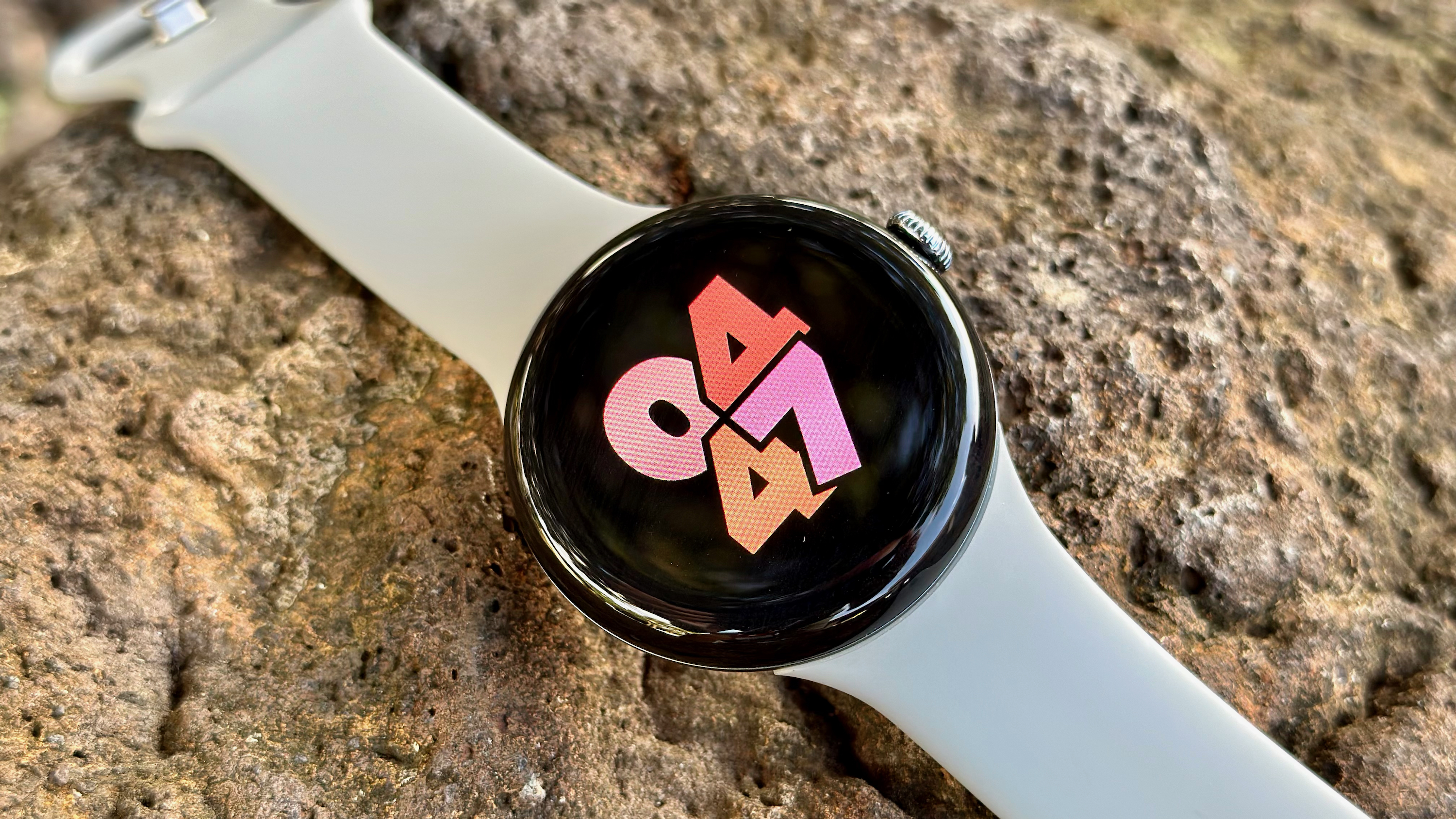
Whichever size you choose, the Pixel Watch 3 display is a highlight. It doubles the brightness (1,000 to 2,000 nits) and refresh rate (30Hz to 60Hz) while reducing the Pixel Watch 2's thick-bordered display by 16%, allowing it to reach the edge where the display begins to curve.
The Watch 2 display always annoyed me, hemming in content with wasted space, but the Watch 3 display has a more reasonable border (even if I hope the Watch 4 shrinks it even further). The brightness boost is vital for making content readable in sunny conditions, and the higher Hz makes scrolling smooth and seamless.
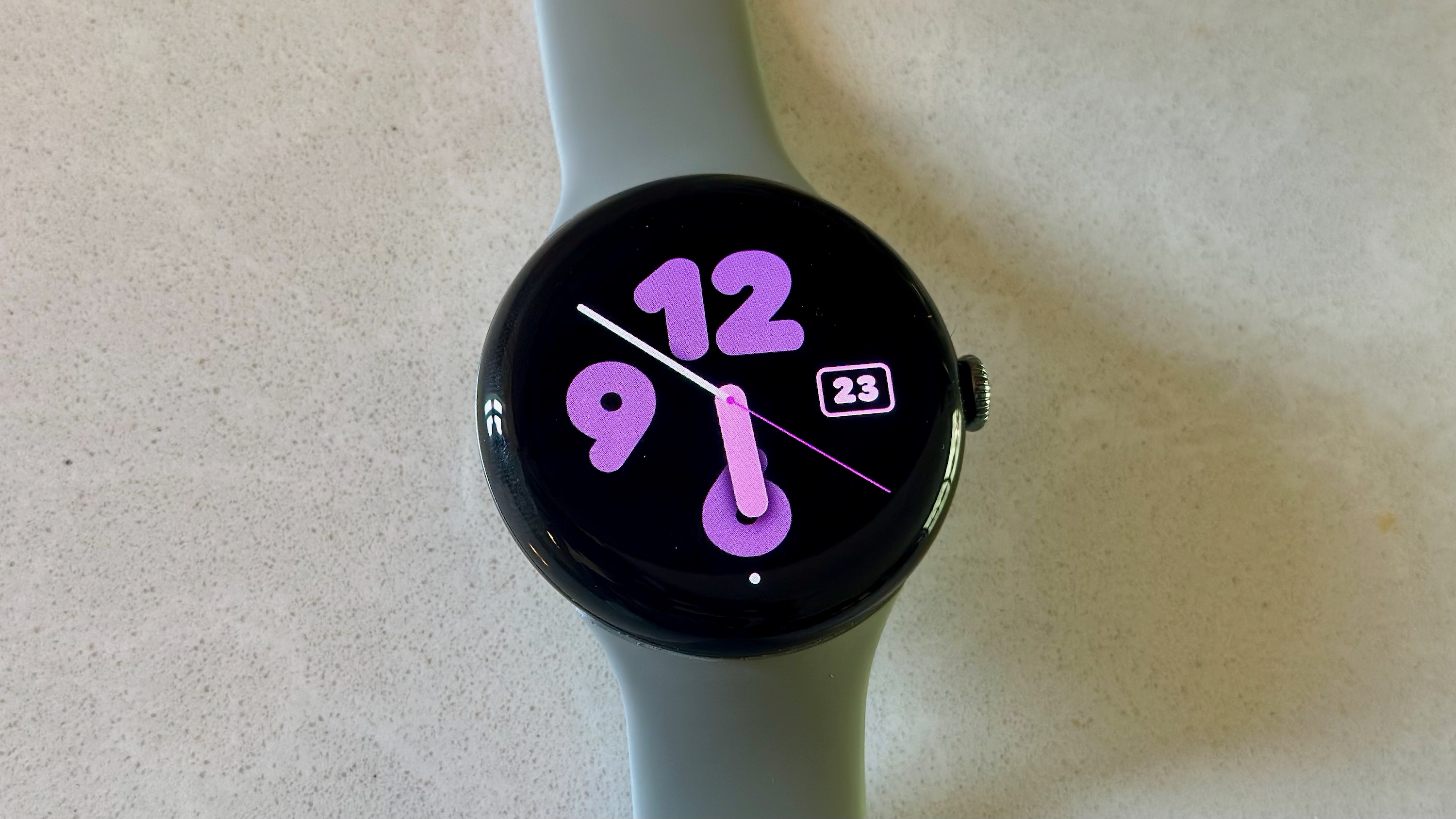
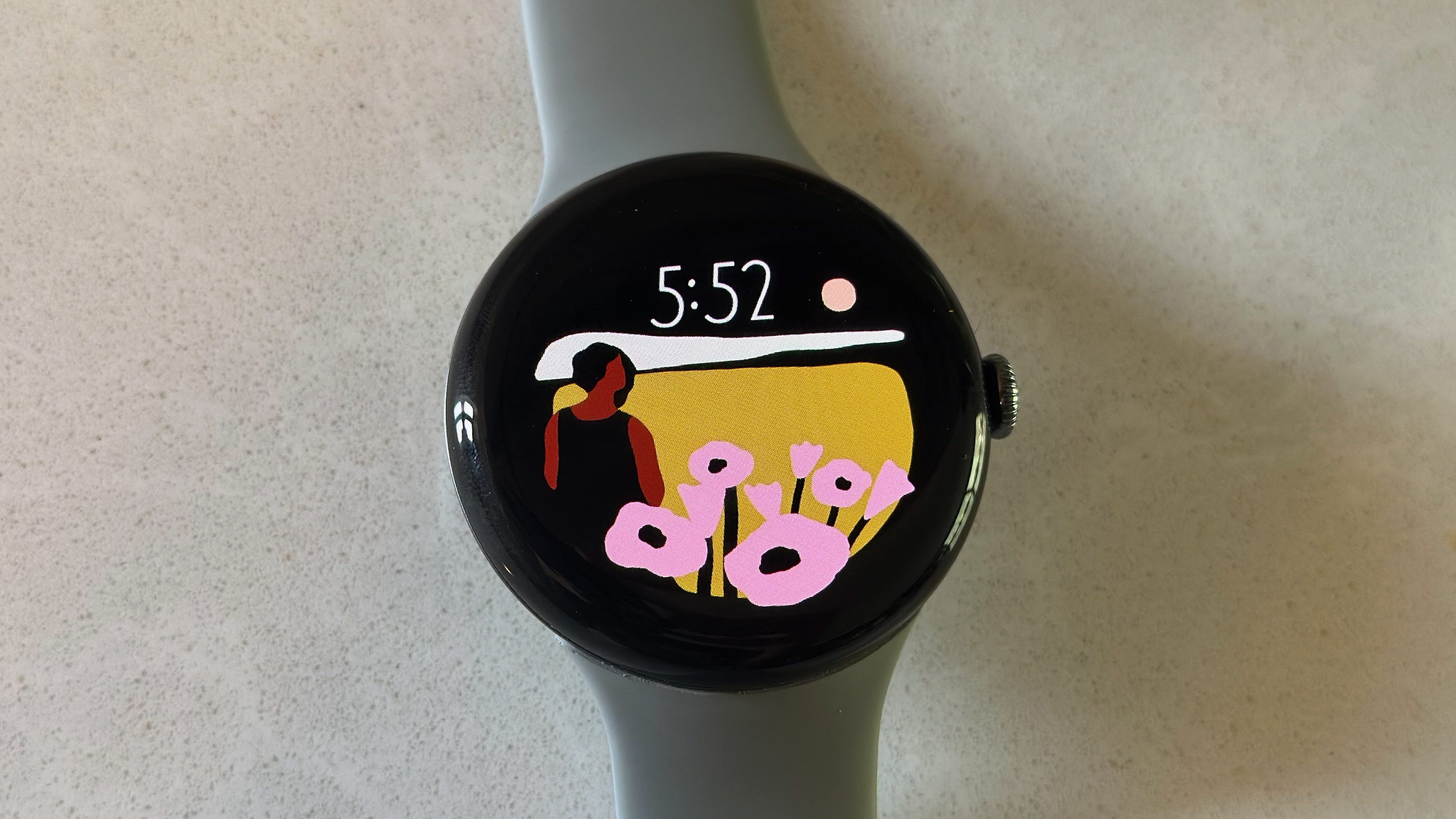
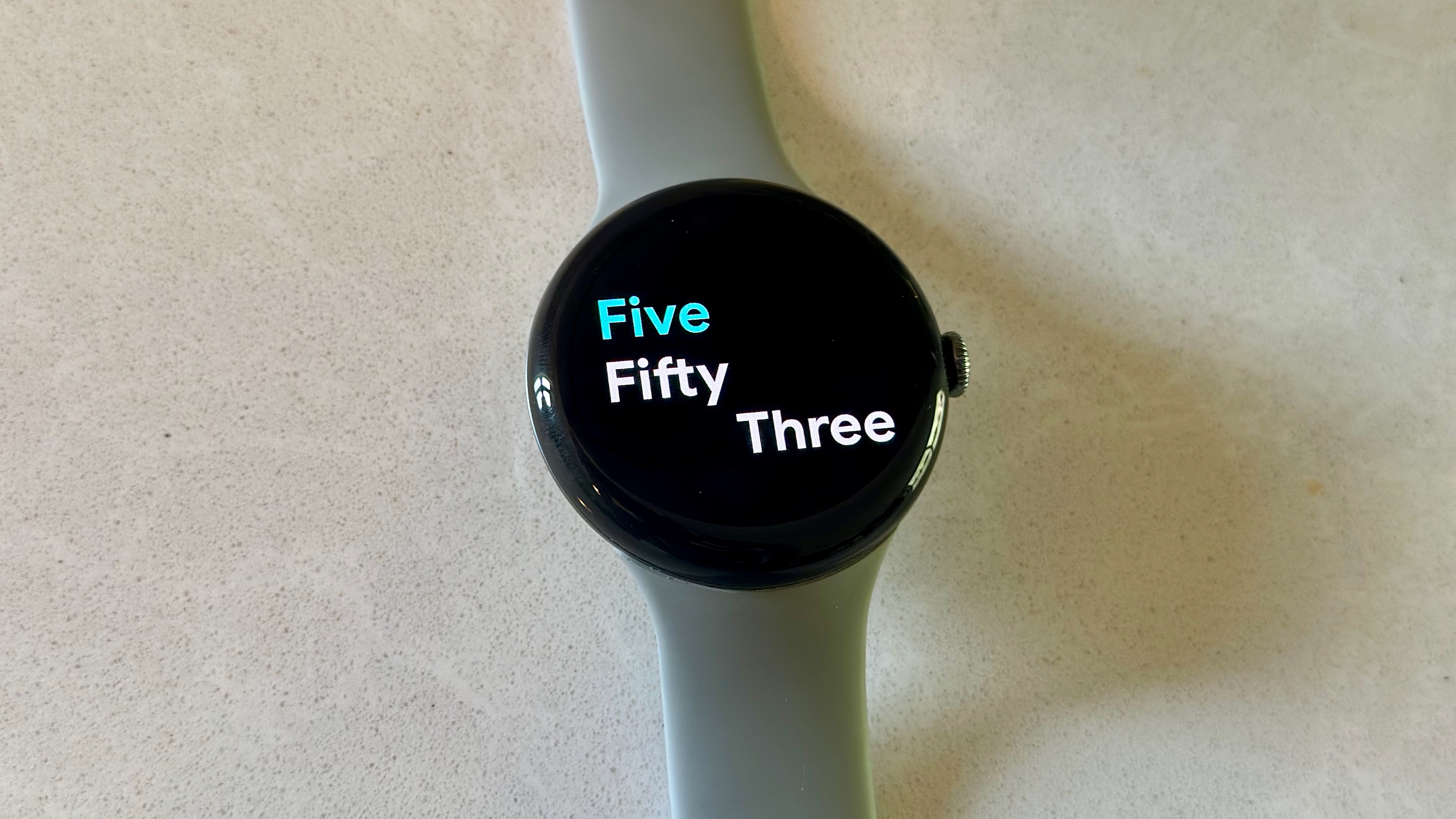
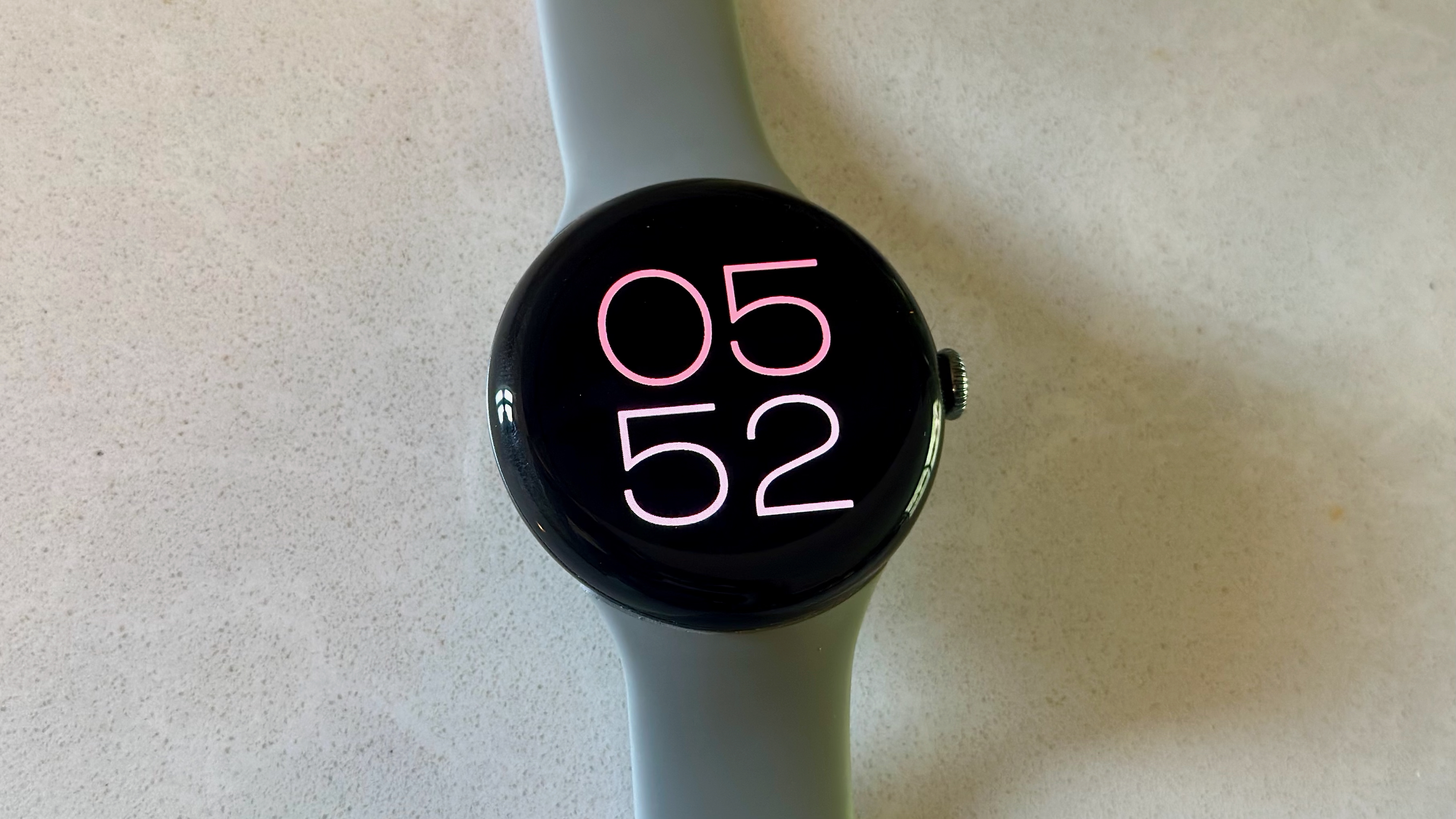
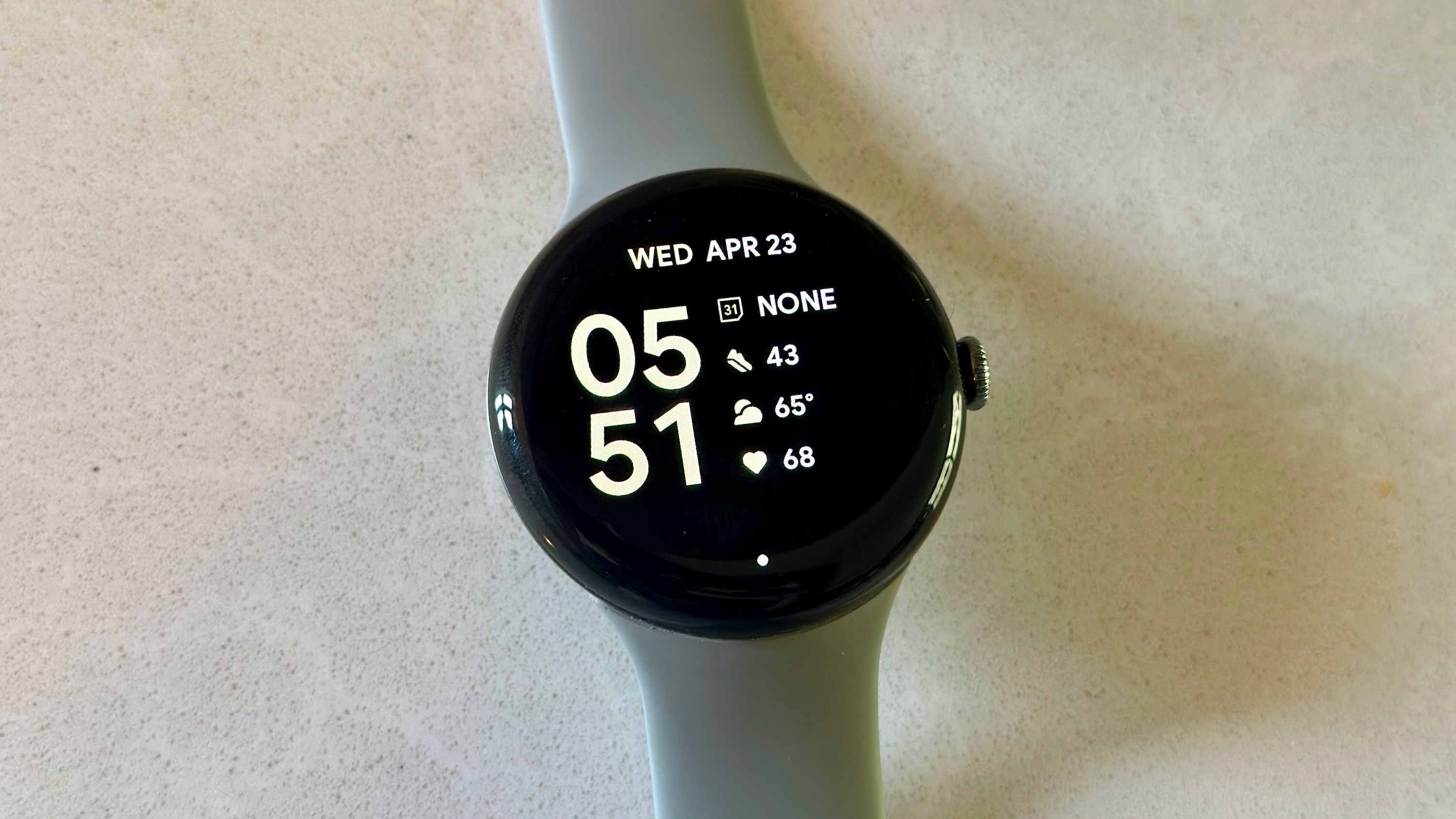
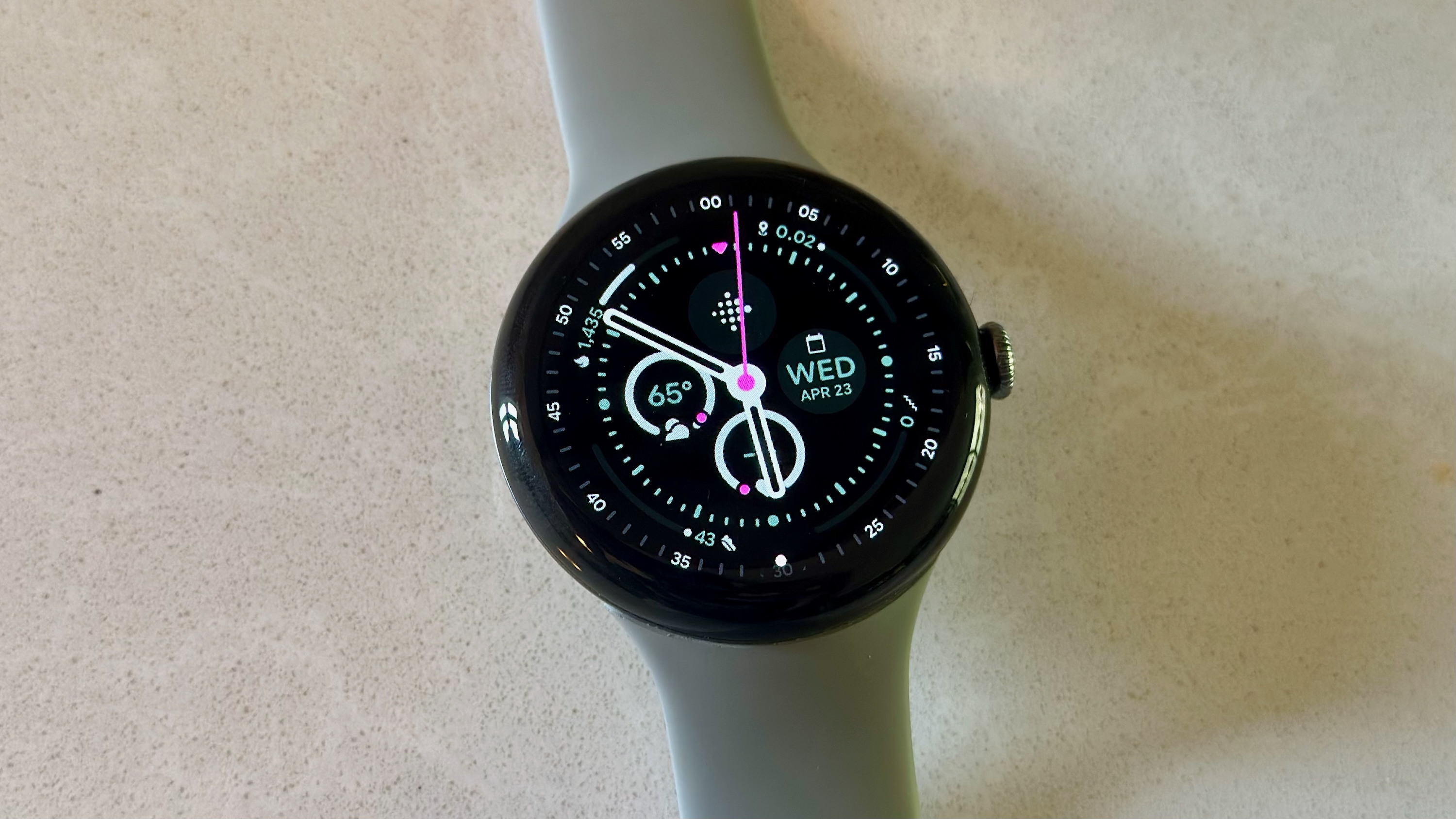
One unavoidable downside to Google's edge-to-edge design is its lack of MIL-STD-810H ruggedness. Without a metal edge, falling or bumping into a wall is riskier. I also wish the Pixel Watch 3 had used sapphire glass instead of Gorilla Glass 5, and I recommend buying a screen protector.
After months of use, however, I've yet to scratch or damage my Watch 3. Its design will turn off serious outdoorsmen or construction workers, but everyone else should be fine.
The other downside is that Google's watch face variety isn't the best. Every face has a dark background to flow seamlessly into the dark edges, making them a bit monotonous. But with Facer coming back to Wear OS 6, we should get a better variety soon.
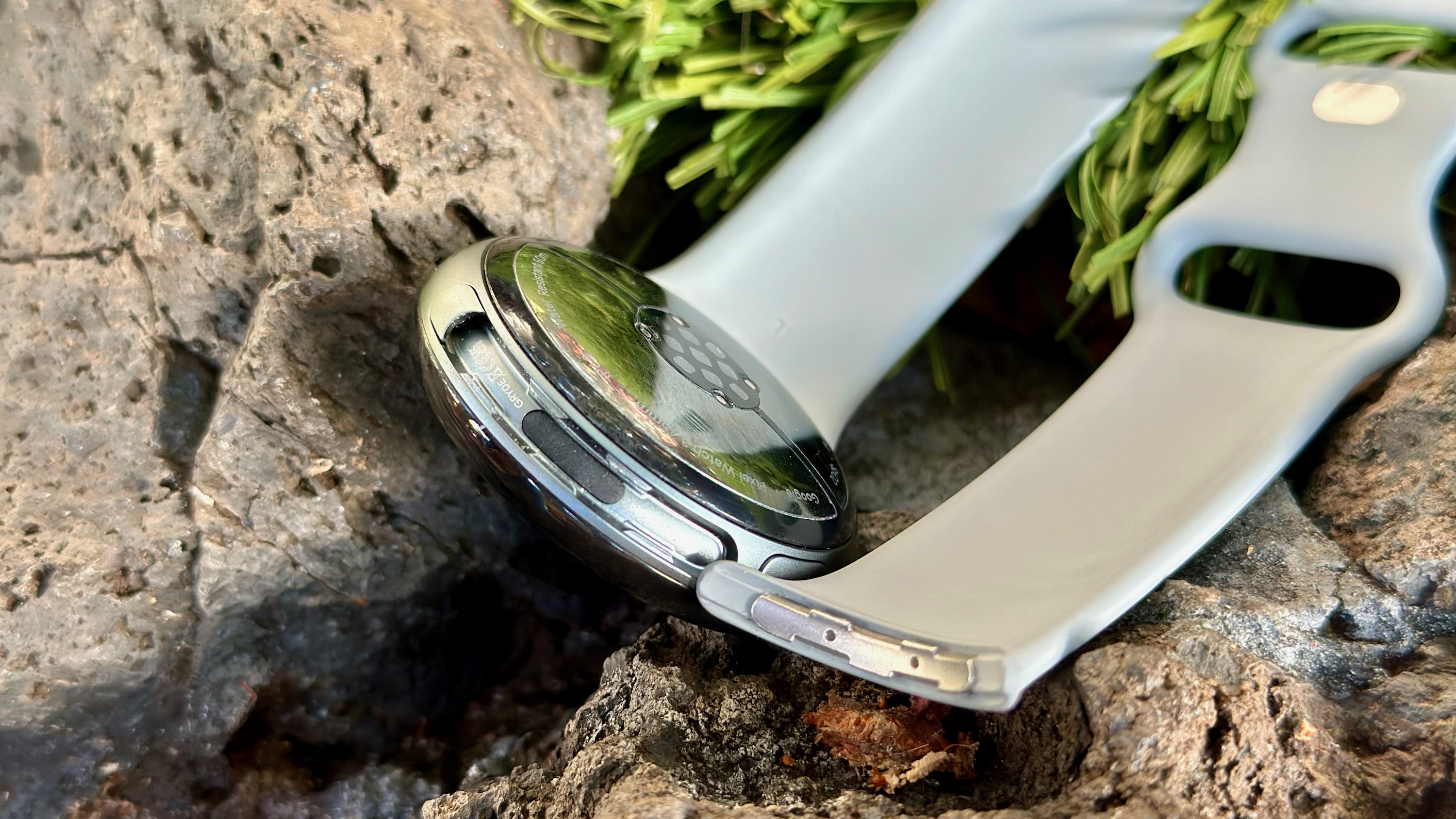
The default Active band is made of comfortable fluoroelastomer. The snap-and-tuck design can tug at arm hair slightly, but once it's secured, there's no worry about wobbling during workouts, unlike with lug straps. The material wicks sweat and feels nice for all-day wear, though I prefer more breathable (hole-filled) bands for workouts.
The Pixel Watch 3 uses a proprietary band connector; your old Pixel Watch 2 bands will carry over if you buy the Pixel Watch 3 41mm, but you'll need new straps for the 45mm. We have a guide on the best Pixel Watch 3 bands to help you build out your collection.
Google Pixel Watch 3: Battery & charging
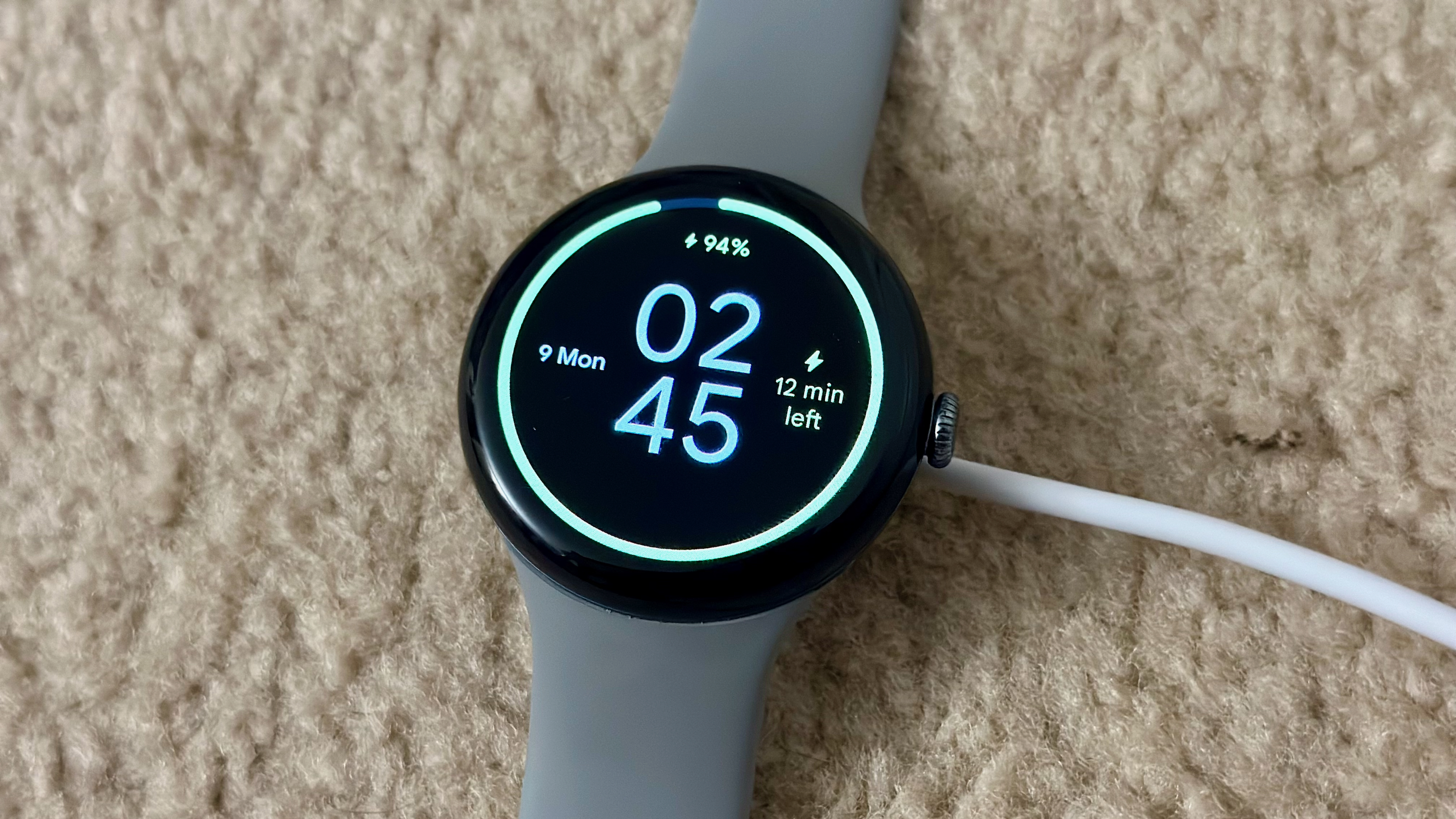
- The Pixel Watch 3 outperforms its 24-hour estimate, especially the 45mm model, but falls short of many Wear OS rivals.
- It charges in 60 minutes (41mm) or 80 minutes (45mm).
According to its official product tech specs, Google states that the Pixel Watch 3 lasts up to 24 hours with Always-On Display (AOD). After months of testing, it's clear Google is selling itself short. If I mainly use the Watch 3 45mm for notifications and sleep tracking, I can get it to last 48 hours with Always-On Display (AOD) active; it'll fall short with one or two GPS-tracked workouts, but still exceed the 24-hour mark.
My colleagues with Watch 3s agree. Derrek says the 45mm model "lasts longer than I expected, although still shorter than I would like." And Nick, who uses the 41mm watch, says it lasts longer than his Pixel Watch 2 did, though not as long as the larger model.
Of course, I agree with Derrek that the Pixel Watch 3 could last longer. The 3–4 day OnePlus Watch 2R (500mAh) or 4–5 day OnePlus Watch 3 (631mAh) simply have more capacity and better efficiency for background tasks. The leaked Pixel Watch 4 appears to be thicker and is expected to feature a new System-on-Chip (SoC), which should help close the battery gap.
The charging speed also received a revamp compared to the Pixel Watch 2. The smaller size takes 15 minutes less to hit 100%, while the 45mm takes only five minutes longer despite the extra capacity. Again, it's not as fast as OnePlus's speedy charging, but no longer slow.
Google Pixel Watch 3: Hardware & health sensors
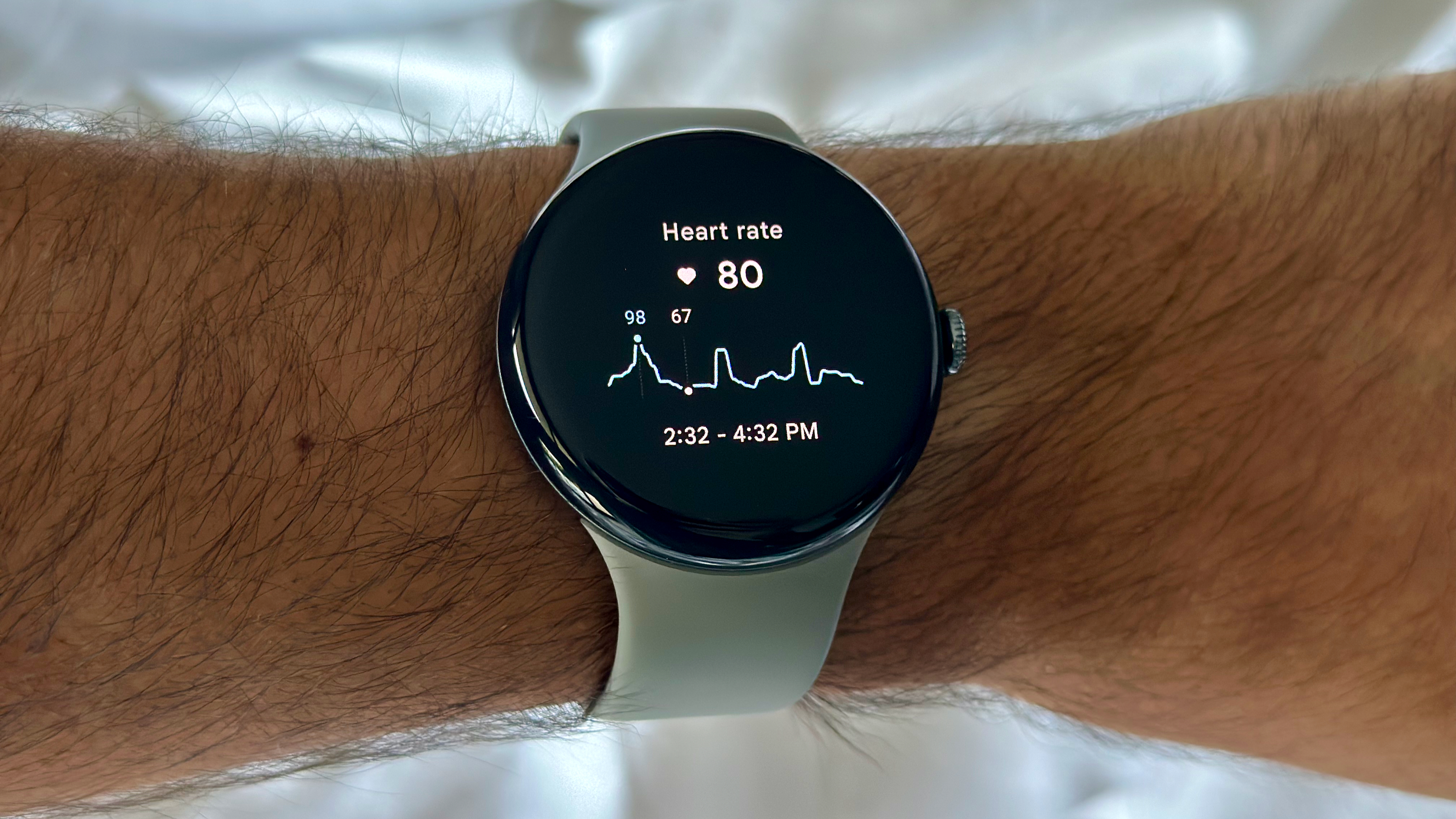
- The Snapdragon chip, RAM, storage, and health sensors are unchanged from the Watch 2.
- Performance remains speedy, and connectivity has improved.
- Unique tools like the cEDA sensor and Loss of Pulse set the Watch 3 apart
If you compare the Pixel Watch 3 vs. Watch 2, you'll find the hardware isn't all that different. It utilizes the same 4nm Snapdragon W5 Gen 1 SoC from 2022, featuring four cores clocked at 1.7GHz, along with a Cortex-M33 co-processor for handling background tasks. Both watches have 2GB of RAM, 32GB of storage, 306mAh capacity (for the smaller version), 5ATM water resistance, and nearly all of the same health sensors.
Thankfully, the Watch 3 remains a speedy device in terms of Assistant commands and app loading times. When Google replaces Assistant with Gemini or updates the Watch 3 to Wear OS 6, it'll optimize them to work with this hardware. There is no long-term concern about performance yet.
Still, the Pixel Watch 4 should receive the next Wear OS chipset, featuring performance and AI enhancements, as well as potential efficiency improvements. So you may want to hold out for the next version.
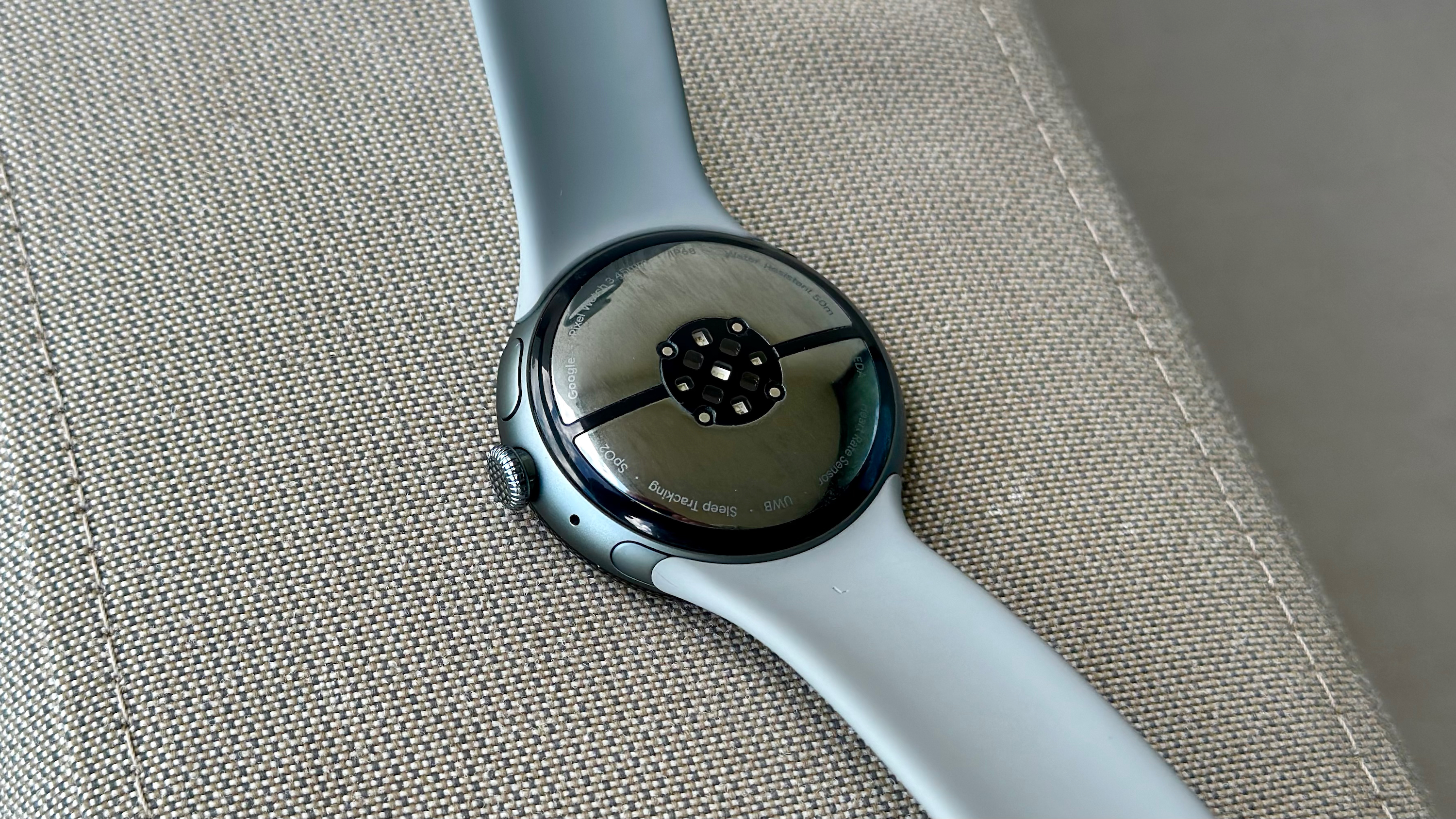
Google has made some subtle quality-of-life upgrades this generation, including Bluetooth 5.3 connectivity improvements, faster Wi-Fi 5GHz connectivity, and Ultra Wideband for unlocking your Pixel phone.
However, in terms of health sensors, all the significant advancements, such as cEDA body response, skin temperature, irregular heart rhythm, and the new multi-path HR sensor, were introduced in the last generation. This isn't to say that they're bad! They've proven quite accurate in my testing. But Watch 2 owners won't see any changes aside from a better HR algorithm for workouts.
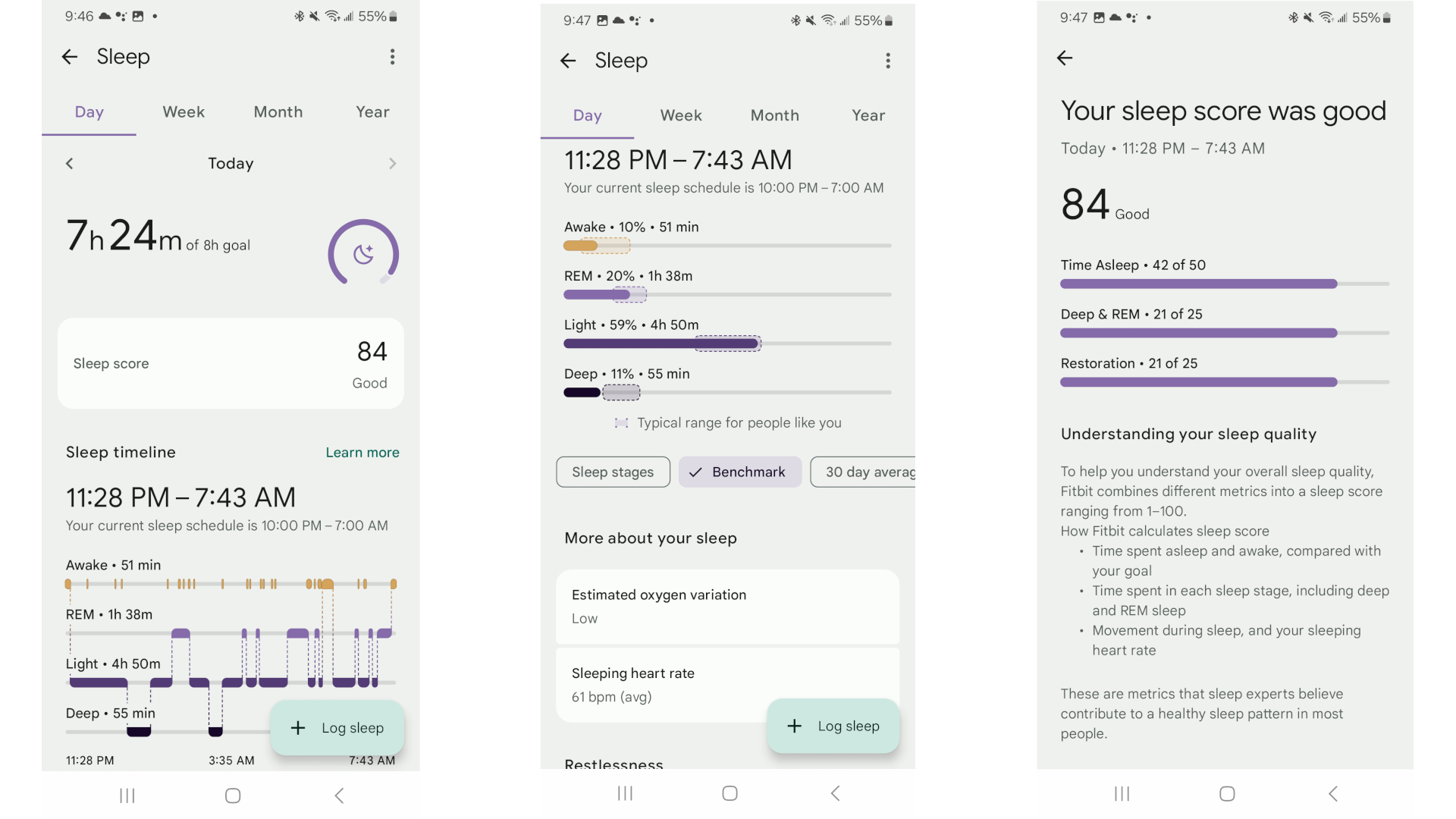
I hate wearing a smartwatch at night, but I made myself sleep with the Pixel Watch 3 enough to get a sense of its sleep-tracking accuracy. Its sleep stages and awake periods match my actual sleep patterns, as do the data on breathing rate, HRV, SpO2, and skin temperature, warning me of any abnormal readings compared to my baseline.
In particular, I appreciate that the cEDA sensor seems much more responsive to my actual stress levels than the HRV data generated by most smartwatches. And I appreciate that it passively checks for AFib issues, warns about Loss of Pulse during cardiac emergencies, and detects falls and car crashes.
Google Pixel Watch 3: Fitness test and cardio load
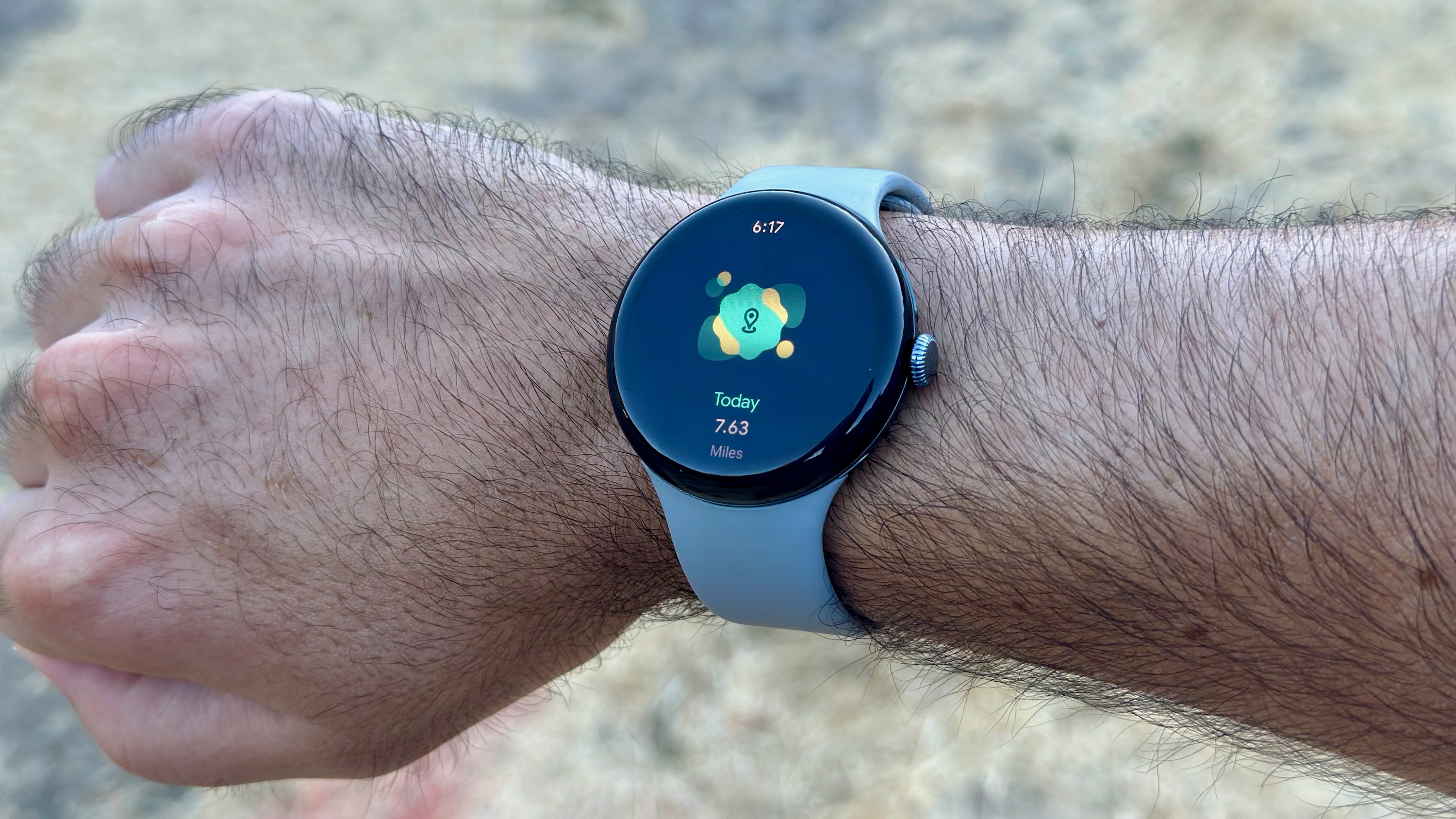
- The Watch 3's HR accuracy is good but not perfect for workouts, while its GPS accuracy is average at best.
- Fitbit's Wear OS 5 fitness upgrades mostly focus on runners, but Cardio Load is useful for everyone.
For GPS accuracy, I use my Garmin Forerunner 965, which beats other dual-band GPS watches from COROS, Polar, Samsung, and Apple in previous tests. For testing optical HR accuracy, I use my COROS Heart Rate Monitor, which compares favorably against an HRM chest strap.
Google claims the Pixel Watch 3 has the "most accurate heart rate for running" compared to past Pixel Watches. Unfortunately, Google didn't add dual-band GPS to it, as Samsung did with the Galaxy Watch 7. I rigorously tested the Watch 3's accuracy across normal runs, track workouts, and long hikes.
For a normal run, the Google Pixel Watch 3 does pretty well for a wrist-based optical HR sensor. It stayed within 1 beat per minute (bpm) of my COROS arm band at most points in the graph below.
Most wrist-based sensors struggle with light artifacts and have difficulty with sudden HR changes. Google's new algorithm isn't bad, but it did fall short of my armband and my Polar Vantage V3, which became a trend.
Across my 10-mile hike, it was responsive to quick changes on hills and valleys, but the final average was 3 bpm short, which is fairly significant. On a second 6-mile hike, there was a similar gap between the armband and Pixel Watch: 135 bpm vs. 132 bpm.
Finally, my track workout was a bit of a mixed bag. Google stayed on track up to about 180 bpm, only to lag behind the COROS band by about 3–5 bpm.
Most mainstream watches I've tested struggle with anaerobic tracking, including the Galaxy Watch Ultra, so this isn't a specific Pixel Watch 3 problem. But perhaps it's a sign that the hardware itself needs an upgrade, not just the algorithm.
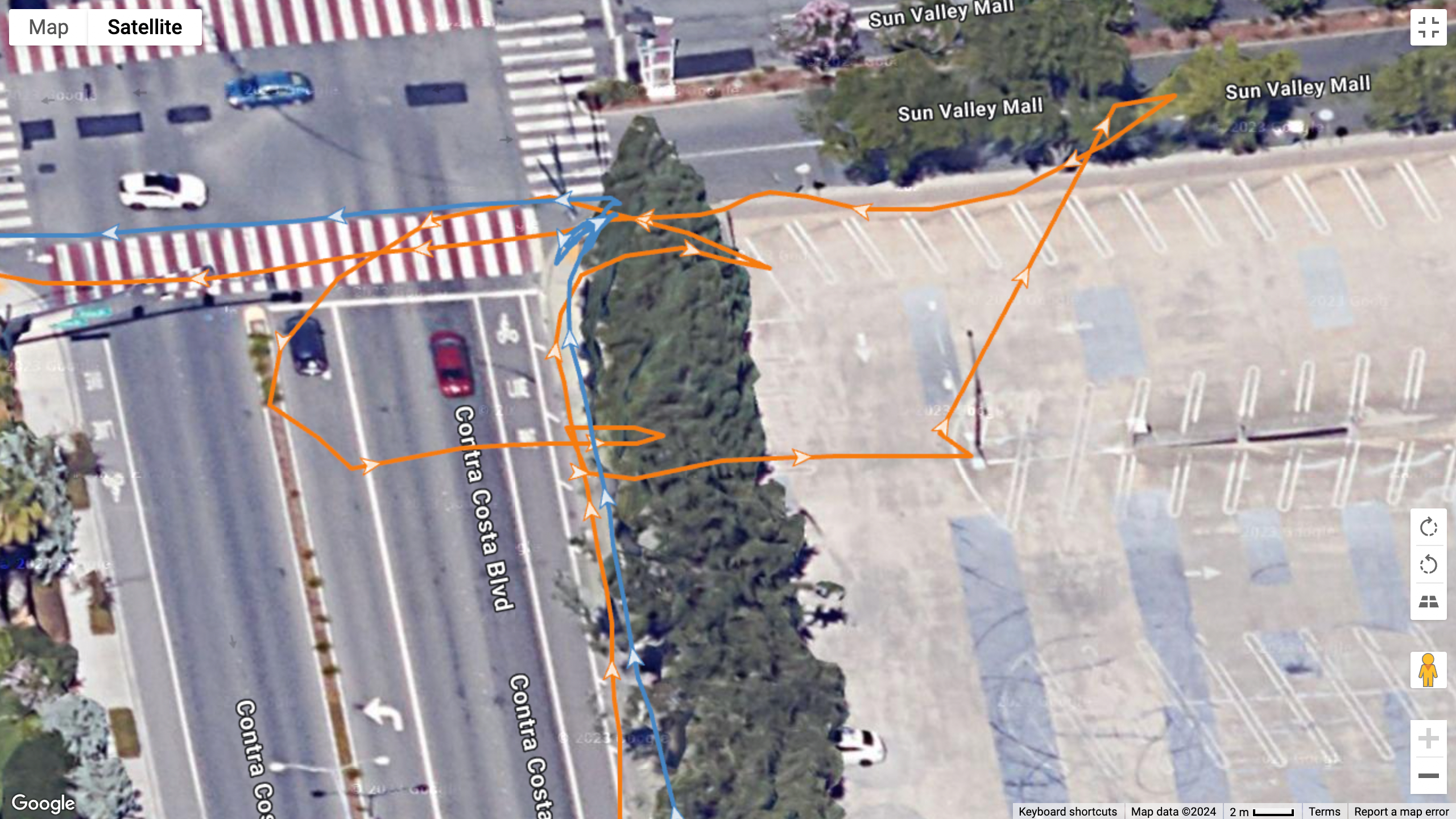
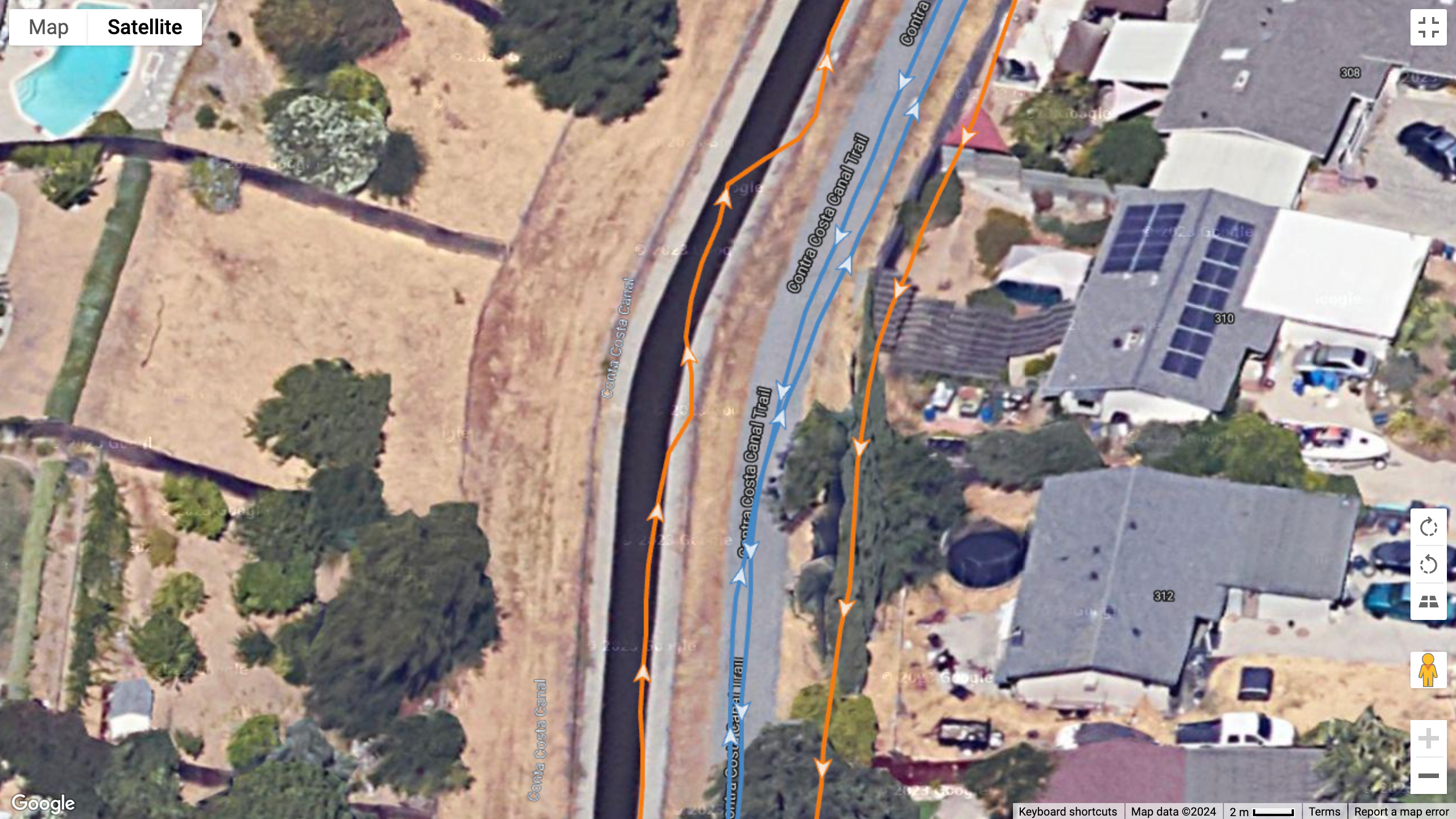
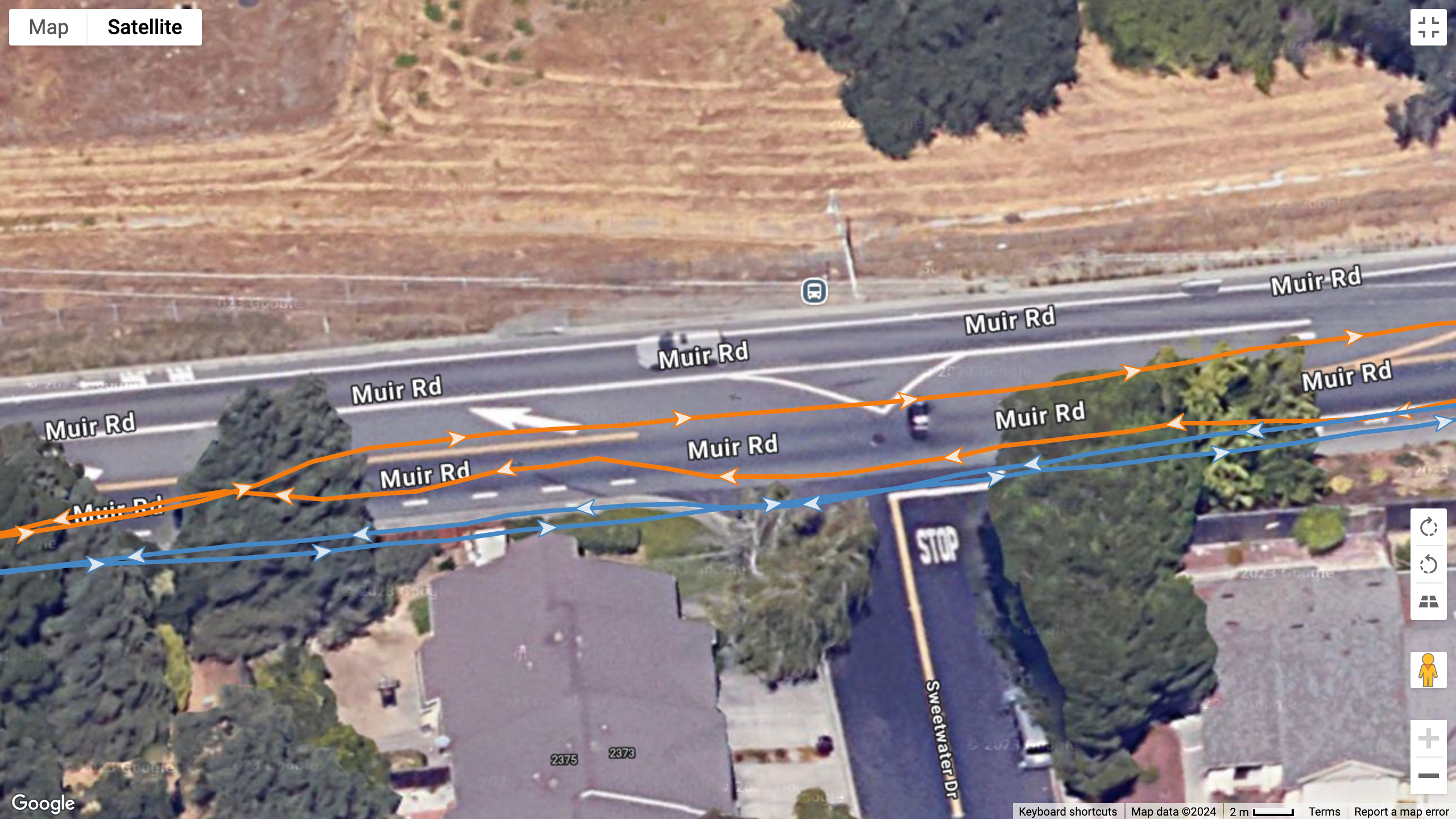
Google's GPS-only accuracy was unreliable. You can see in the screenshots above how Google (orange) throws my position all over the place, especially in the wild first example.
Most commonly, it's parallel to Garmin's dual-band GPS but significantly off to the side, which leads to losing or gaining distance artificially on turns. After a 10K, it lost about eight-hundredths of a mile, which is pretty standard for a GPS-only watch.
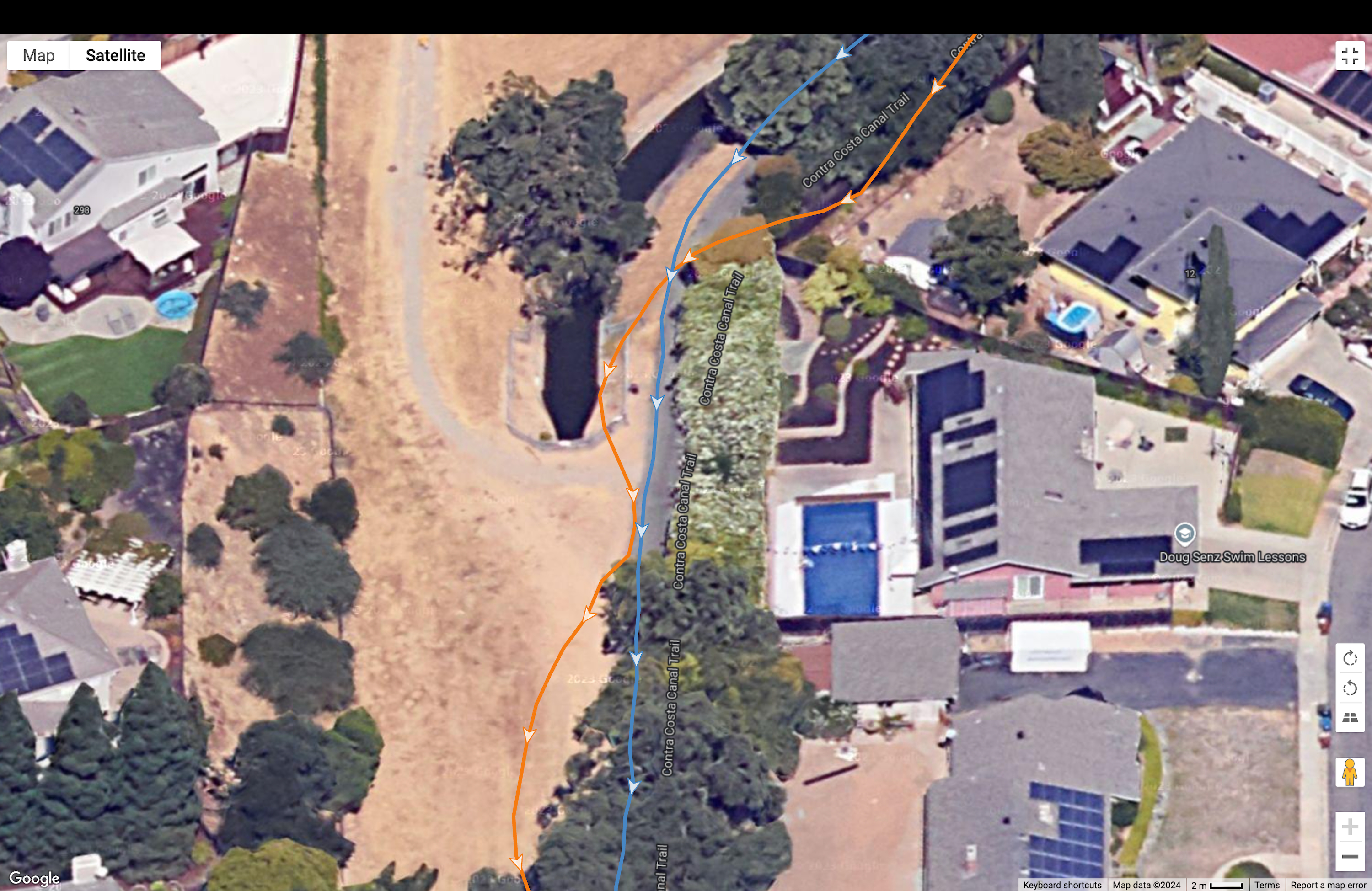
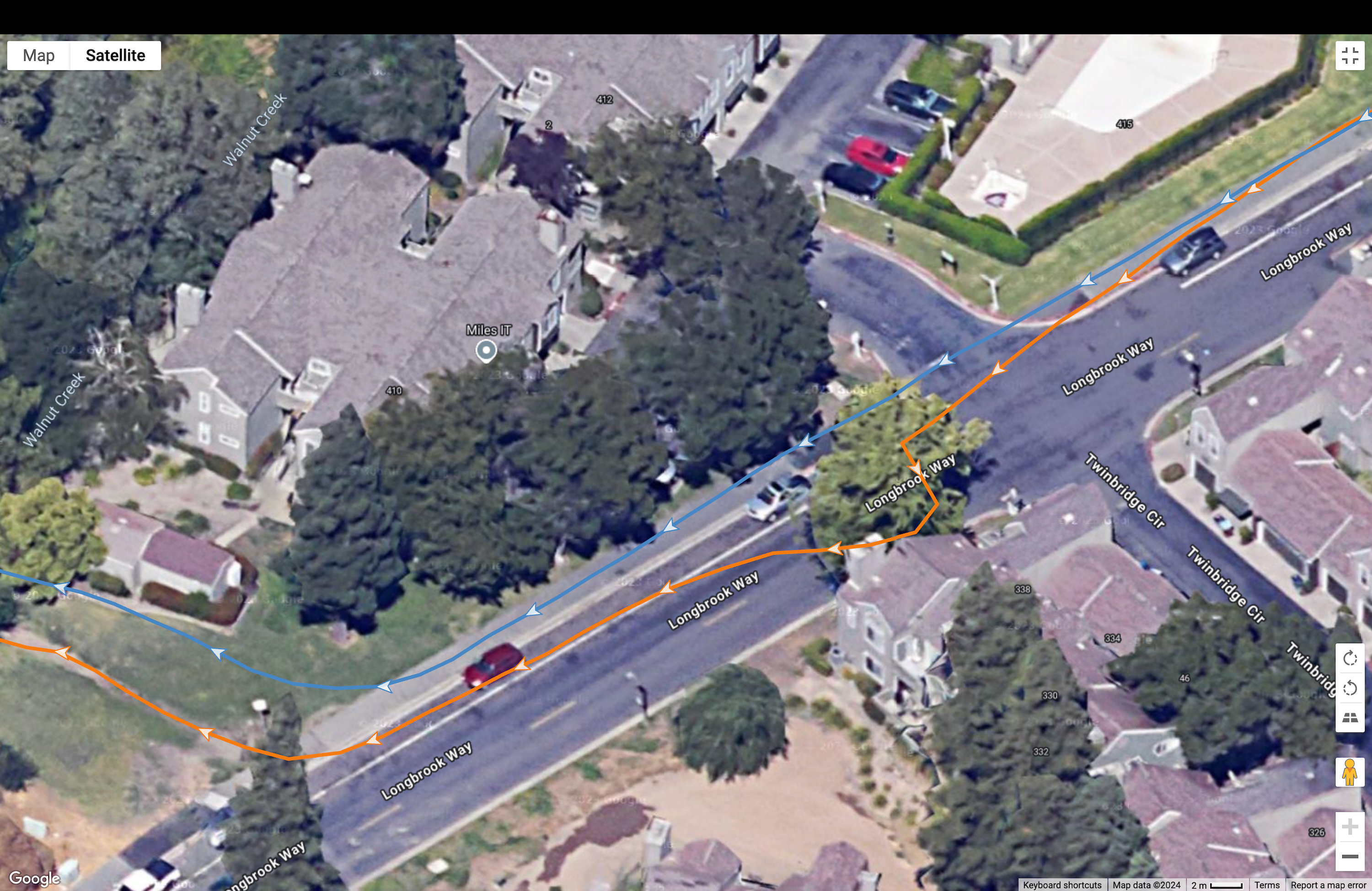
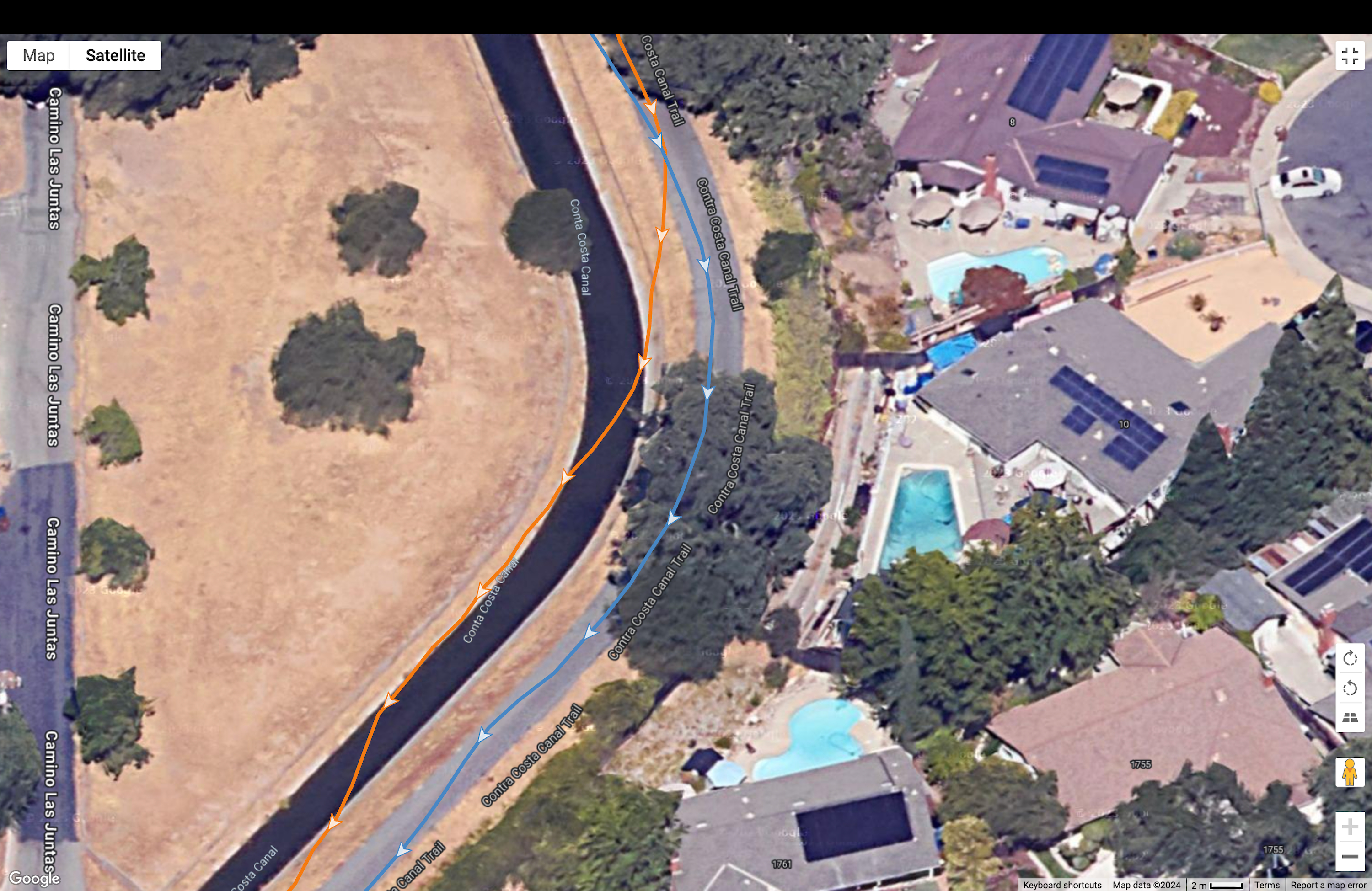
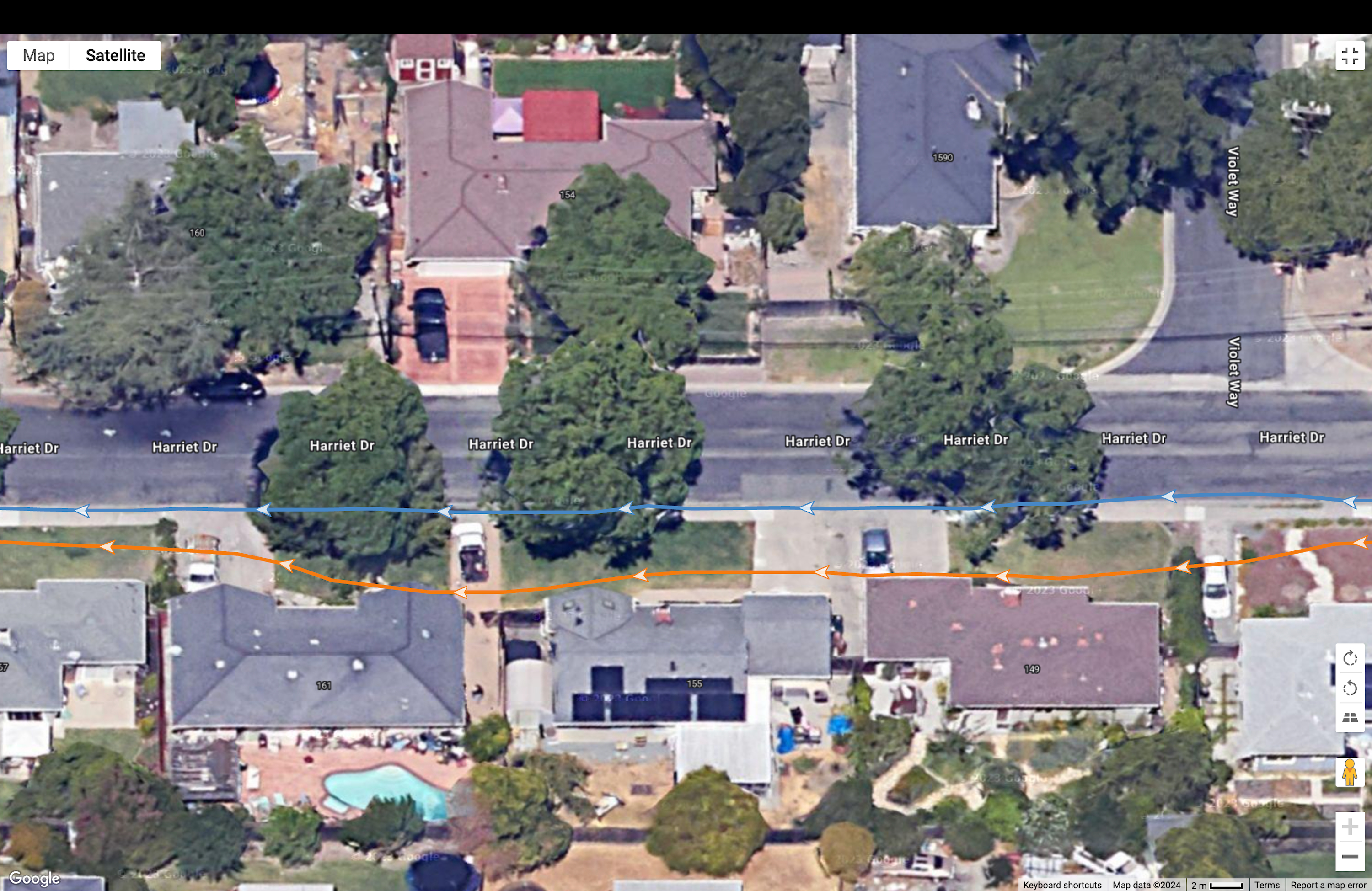
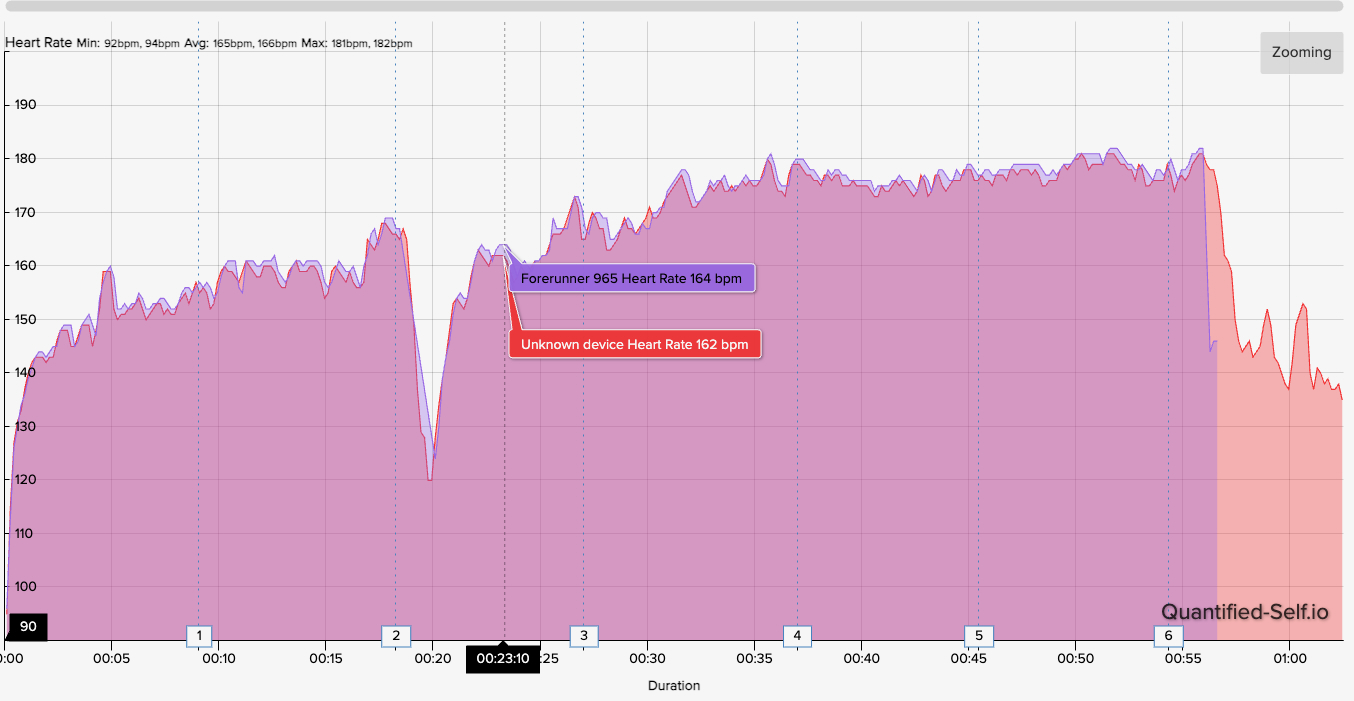
For hiking, the wobbly tracking led to massive overestimates of how far I'd hiked. The line itself wasn't that far off, but on my route, a stray line suggested I was climbing off-trail up hills or down steep cliffs. Where Garmin matched my AllTrails route, the Pixel Watch 3 added an extra 0.25 mi and 0.4 mi to my 6-mile and 10-mile hikes, respectively.
Finally, I ran 20 miles wearing four watches, including the Pixel Watch 3, and the results were predictable: the Watch 3 overestimated my mileage by about a tenth of a mile and fell 1 bpm short on average of more accurate running watches.
Overall, I'd give the Pixel Watch 3 a B for heart rate accuracy — good enough for general calorie and training load data, but not for serious athletes — and a C average for GPS data. It's a shame, because the new Fitbit running software is a fantastic pivot (if not quite "A" worthy).
Creating running workouts is very easy once you get the hang of it, with criteria like distance or calories burned. My personal favorite is the Time Trial workout where you set a distance and time to finish it, which adds a sense of urgency.
Fitbit post-run data includes running form analysis, heart rate zones, and elevation gain, but not other popular tools like running power, aerobic/anaerobic training effect, or sweat loss.
I really like the new Fitbit Cardio Load system, which gives you credit for things like carrying groceries or walking around the mall, not just tracked activities. It also considers whether you worked hard yesterday before recommending too much target load the next day.
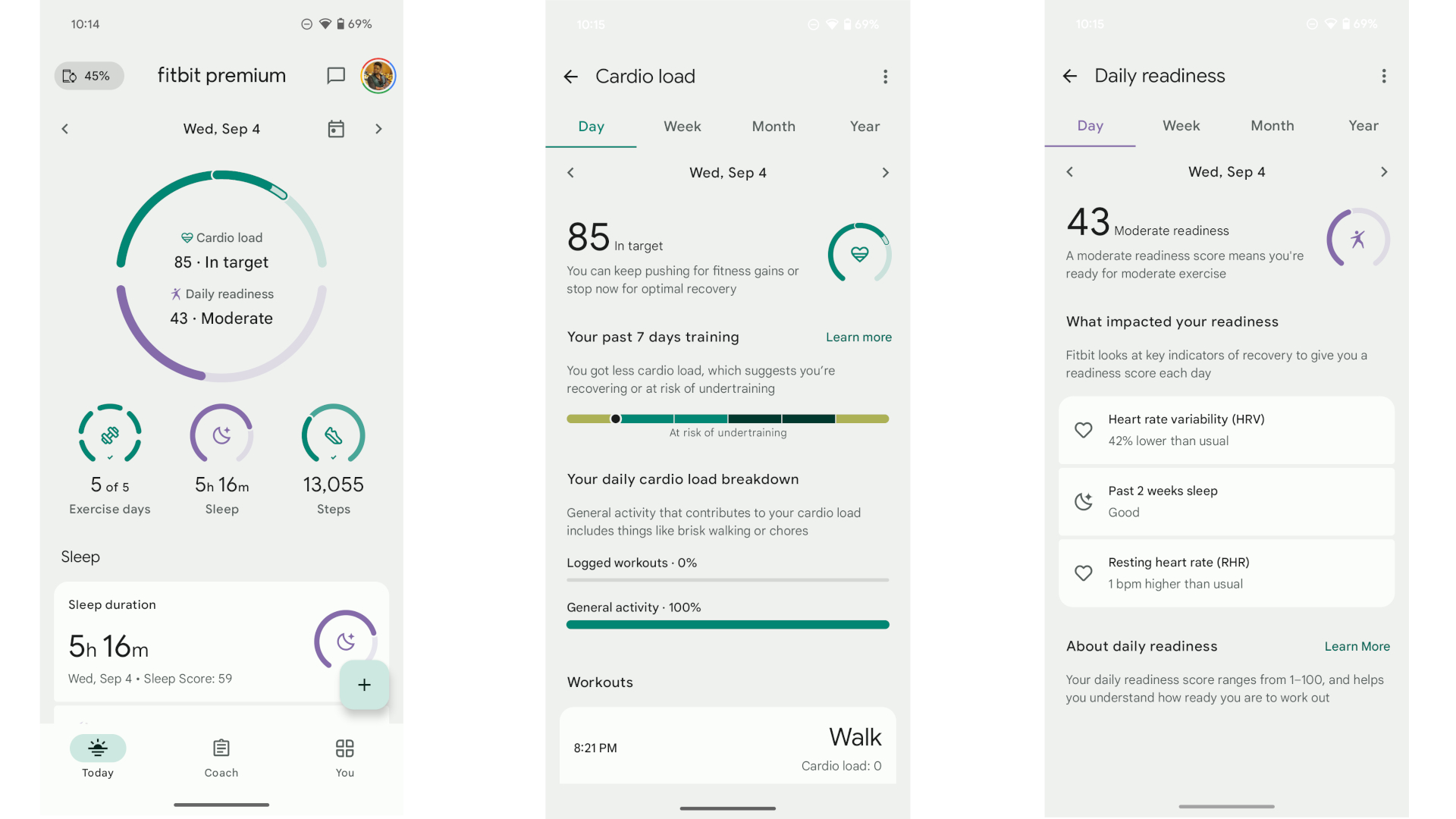
My Daily Readiness score and Target Load felt pretty accurate to my real-life energy level.
Compared to Garmin's training load, Fitbit Cardio Load prioritizes a workout's duration over its intensity. Garmin will give a huge amount of TL for a 15-minute track workout but barely anything for hours of fast walking. Fitbit gives more credit for long, low-aerobic hikes but underestimates the effect of a hard, fast workout.
Cardio Load doesn't care what type of sport or workout you prefer. However, the Pixel Watch 3 primarily caters to runners, overlooking other athletes, despite the fact that runners may prefer watches with significantly longer battery life.
My hope is that the next Pixel Watch focuses more on other sporting tools like cycling data, tracking gym reps, or guiding hikers with offline maps.
Google Pixel Watch 3: Software
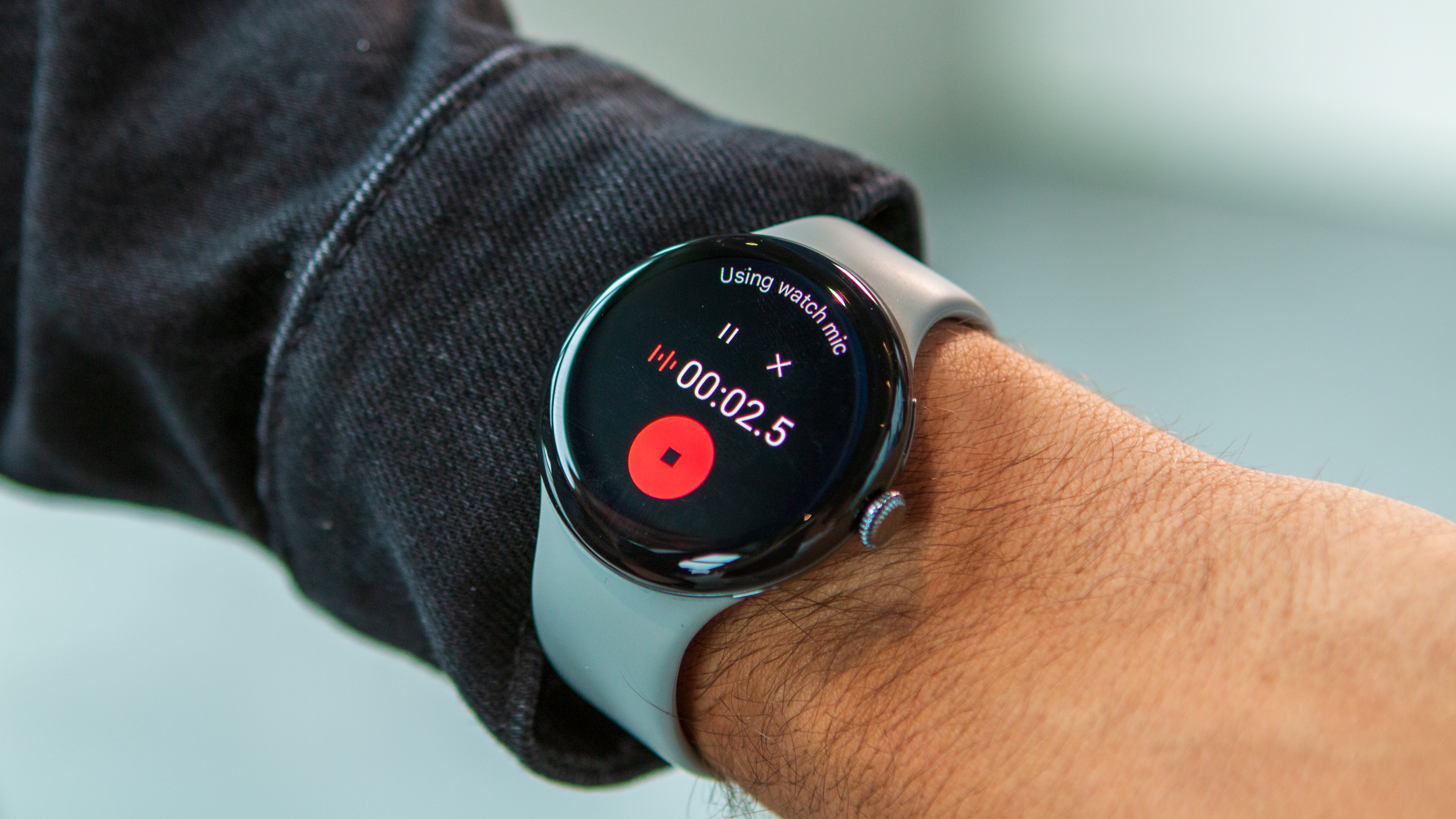
- It gets speedy, consistent (but sometimes buggy) Wear OS updates.
- The Pixel Watch 3 had many more Pixel exclusives and tie-ins to Google devices.
- Wear OS 6 and Gemini will transform the Watch 3 experience in 2025.
When my colleague reviewed the Pixel Watch 2, he praised that "Google didn't hold back certain features if you have a non-Pixel phone." However, with the Pixel Watch 3, its UWB unlock feature is only compatible with the Pixel 7, 8, and 9 Pro models. The Pixel Recorder app only uploads recordings to Pixels, and the Hold for Me call feature is also exclusive to Pixels.
Plus, the most high-profile new Wear OS 5 tools focus on Fitbit or Google devices. Most notably, you can check your Nest Doorbell feed on your watch or control your Chromecast with Google TV with Tile controls. The Watch 3 works with other Android devices, but it's really meant for Google fans. Keep that in mind!
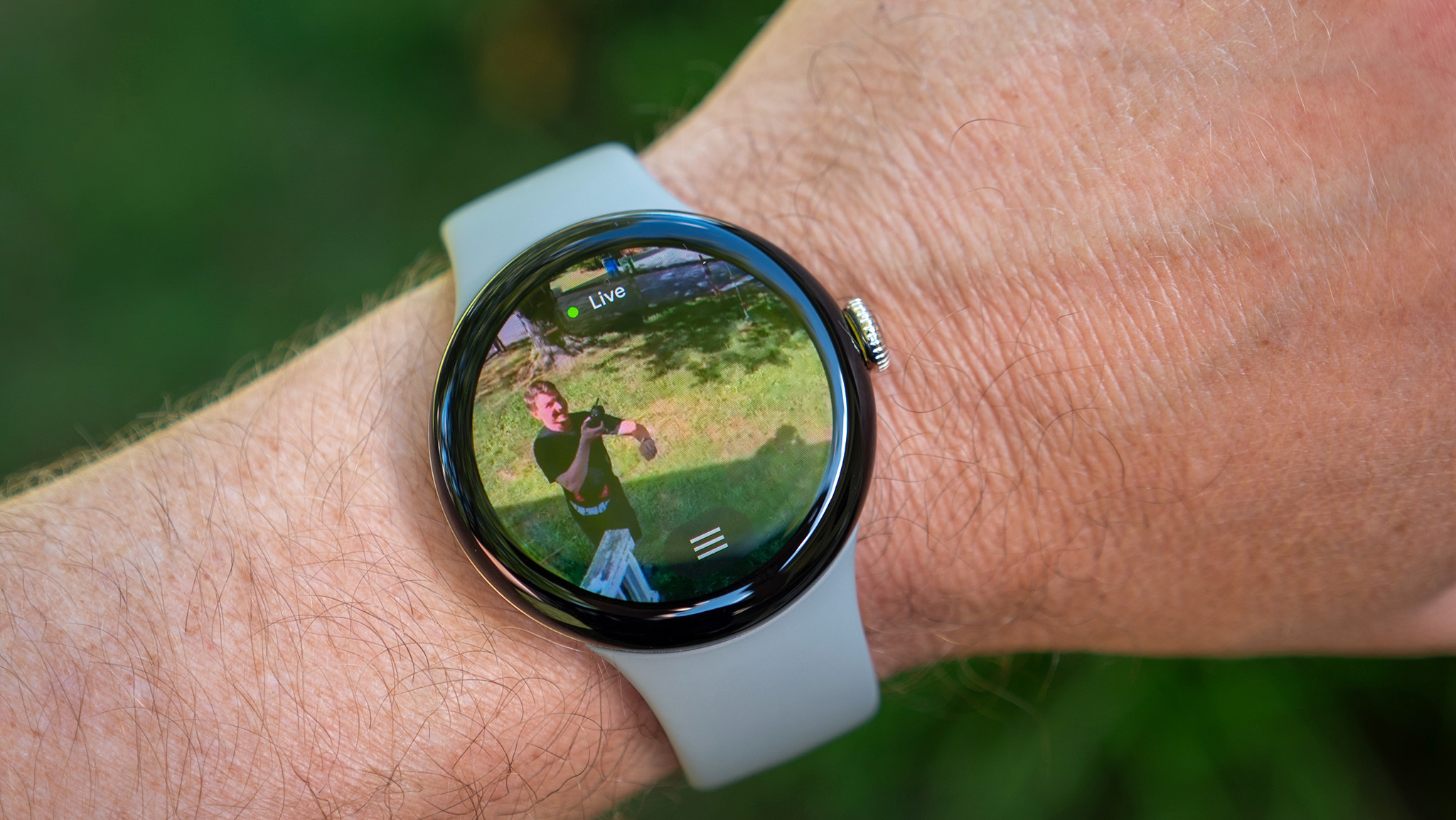
I don't have a Nest Cam, but Android Central senior editor Nick Sutrich tested the feature for me, finding it almost as responsive as checking the livestreams on his phone (Bluetooth adds a slight delay). He loves the ease of checking who's there at any time in case his phone isn't on hand.
I don't have much of a smart home, but I do find I'm more apt to play with my smart lights now that I can access them quickly in the Google Home tile instead of pulling out my phone. As for Google TV playback, it's less convenient than simply using your remote control, but it's useful in a pinch.
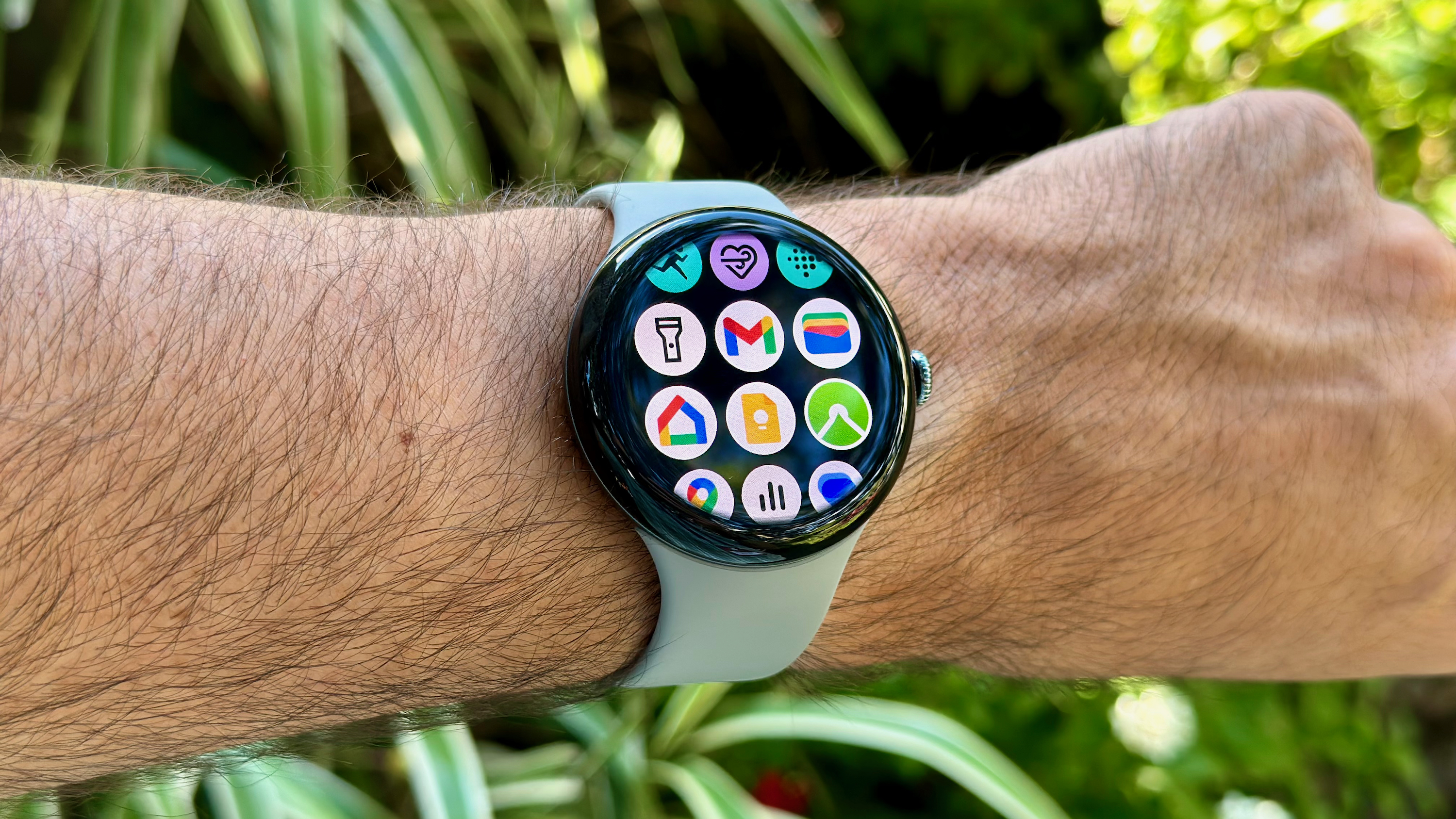
Google has promised Pixel Watches will receive quarterly feature updates, but Wear OS 5.1 was a messy update with several rolled-back features, and Wear OS 5 took months to come to last-gen Pixel Watches. I'm hoping that by the time Wear OS 6 arrives, Google will prove it can get these updates right!
Having tested Wear OS 6 at Google I/O, I'm excited about this new version, featuring a stylish Material 3 Expressive UI, revamped Tiles with improved shortcut options, new third-party watch faces, and other updates. Plus, we know Gemini is coming soon, offering more natural language responses and better control over other apps for actions like summarizing your Gmail inbox.
For now, though, the Pixel Watch 3 is a very strong Wear OS option with another couple of years of regular updates.
Google Pixel Watch 3: Competition
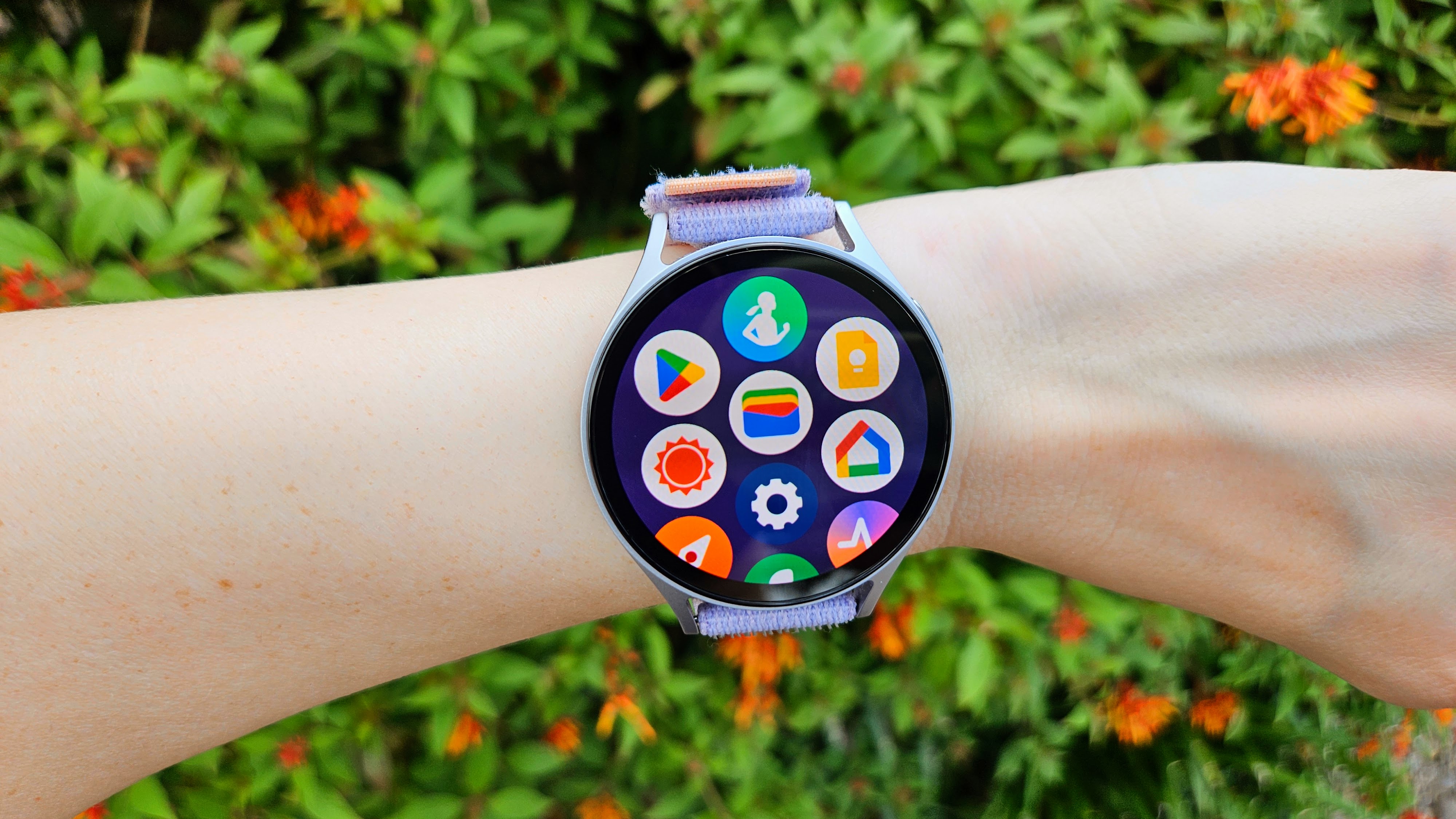
The immediate, obvious Pixel Watch 3 competitor is the Galaxy Watch 7. We have a comprehensive Pixel Watch 3 vs. Galaxy Watch 7 guide that thoroughly covers every difference, but the key differences include the Watch 7's absence of a crown, a newer 3nm Exynos chip, dual-band GPS, advanced HR sensors, and sapphire glass protection for the displays.
If you want better battery life but still need Wear OS messaging, the OnePlus Watch 3 can last five to six days, features the same Snapdragon processor and memory, and costs the same. As for negatives, it's quite large and heavy with no smaller option, it gets fewer (and slower) Wear OS updates, and some features like LTE and ECGs aren't available in the U.S.
You could always consider the cheaper Fitbit Sense 2 for the same health sensors, cardio load, six days of battery life, and a couple of Google apps, but downgraded in terms of smarts. Otherwise, I'd recommend looking at Garmin watches for better HR and GPS accuracy and similar daily workout suggestions without requiring a subscription.
Google Pixel Watch 3: Should you buy it?
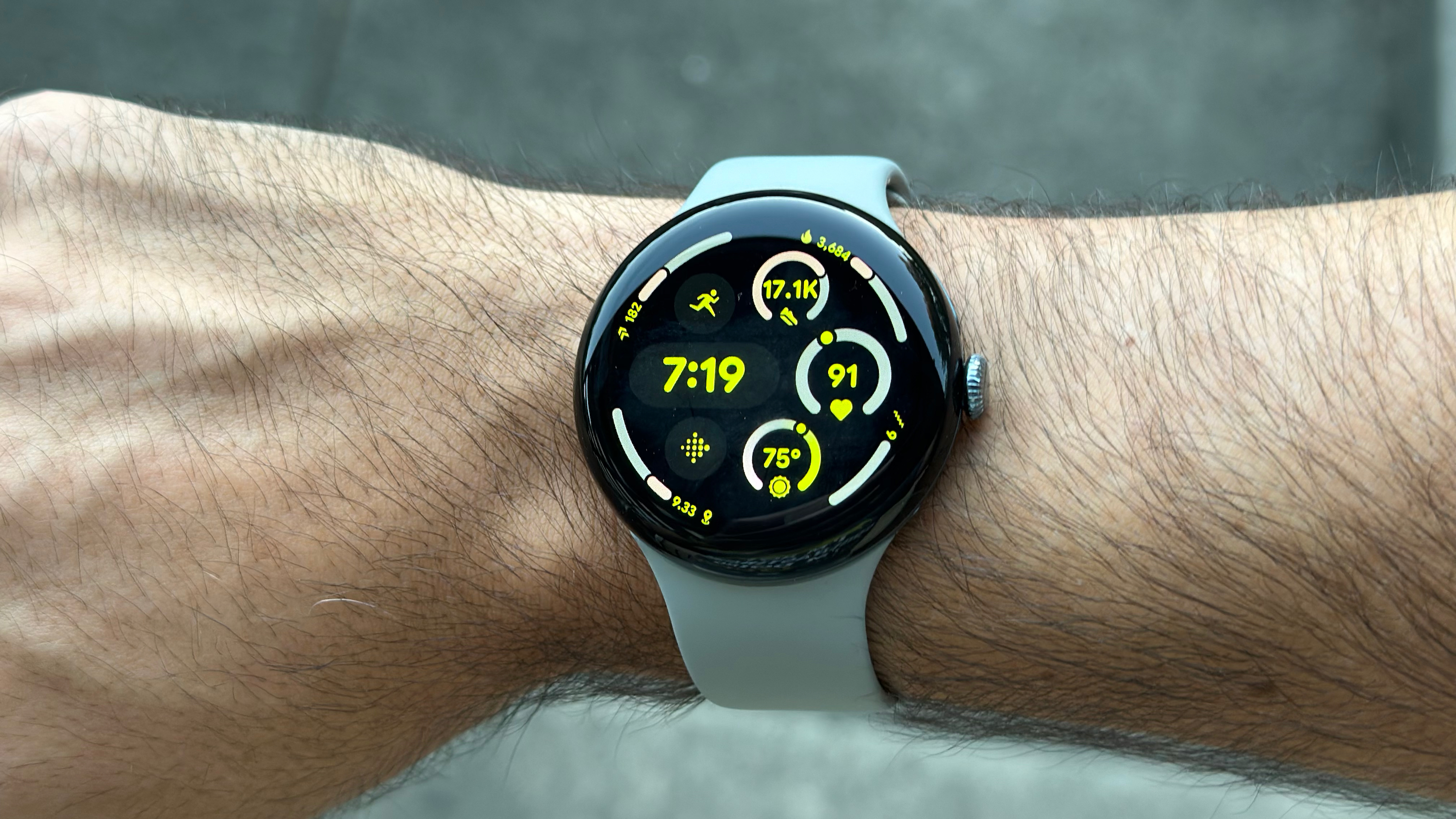
You should buy the Google Pixel Watch 3 if...
- You like your Pixel Watch 1/2 but want a better display.
- You have a Pixel phone and want the best smartwatch integration.
- You're an athlete excited by the health tracking and workout tools (but don't need weeks of battery life).
You shouldn't buy the Google Pixel Watch 3 if...
- You care more about battery life, durability, classic style, or affordability.
- You'd rather hold out a year for the Pixel Watch 4's upgrades
The first Pixel Watch arrived late with a dated CPU and a limited feature set. The Pixel Watch 2's Snapdragon chip and Fitbit sensors helped, but the display still felt like the Achilles' heel.
The Google Pixel Watch 3 is Google's strongest wearable entry yet. But it's still playing catch-up because years-old hardware like the Snapdragon W5 Plus, Fitbit sensors, and GPS-only tracking are hitting their limits while Samsung jumps ahead.
However, I still prefer the Pixel Watch 3 over the Galaxy Watch 7 for its style and crown controls, despite its limitations. If you don't want to wait for the Pixel Watch 4, this is a fine smartwatch to buy this summer.
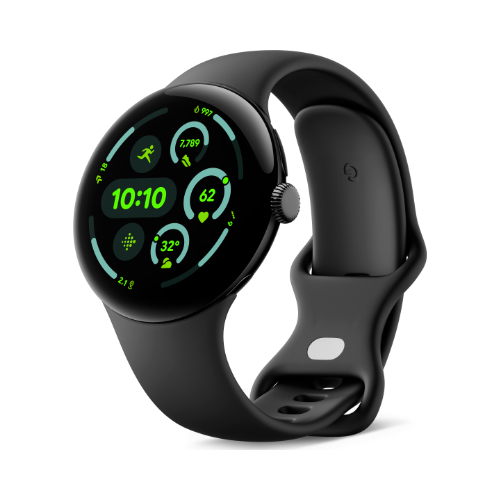
Running towards the goal
The Google Pixel Watch 3 comes in two sizes for the first time, while doubling its display brightness and adding a 60Hz LTPO panel for smoother transitions. It launches with Wear OS 5 and should receive Wear OS 8 in 2027. Google is racing to catch up with Samsung for wearables, and the Pixel Watch 3 proves that it's closing the gap.

Michael is Android Central's resident expert on wearables and fitness. Before joining Android Central, he freelanced for years at Techradar, Wareable, Windows Central, and Digital Trends. Channeling his love of running, he established himself as an expert on fitness watches, testing and reviewing models from Garmin, Fitbit, Samsung, Apple, COROS, Polar, Amazfit, Suunto, and more.
- Nicholas SutrichSenior Content Producer — Smartphones & VR
- Derrek LeeManaging Editor
You must confirm your public display name before commenting
Please logout and then login again, you will then be prompted to enter your display name.
